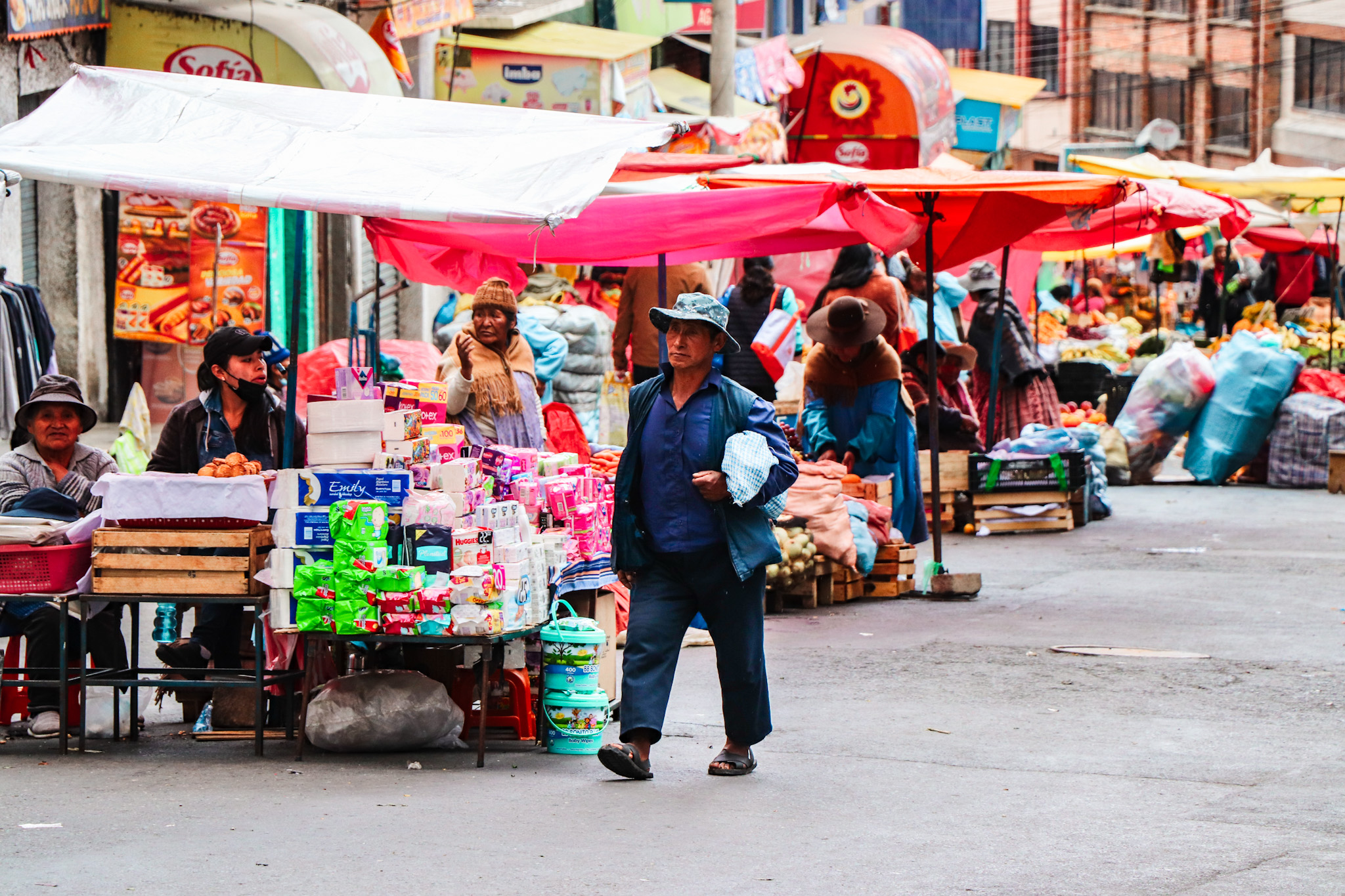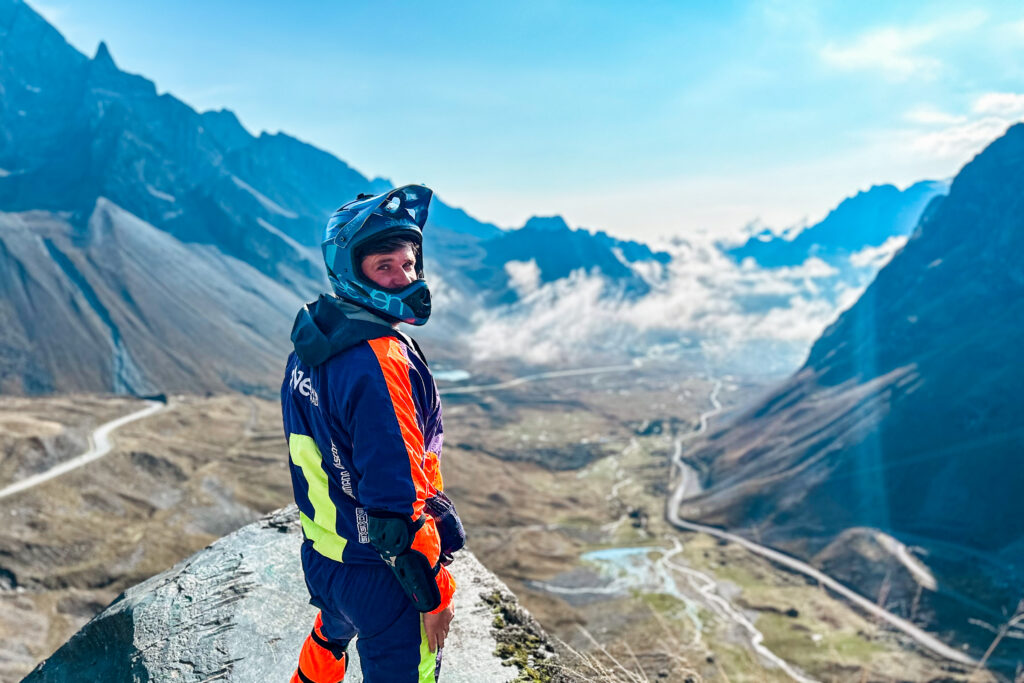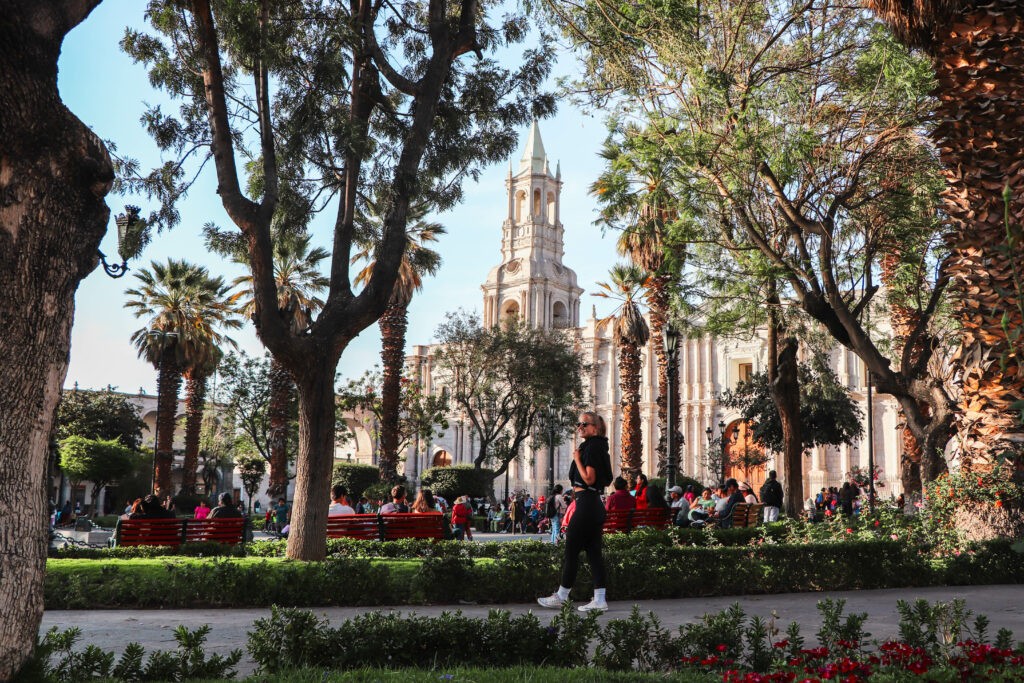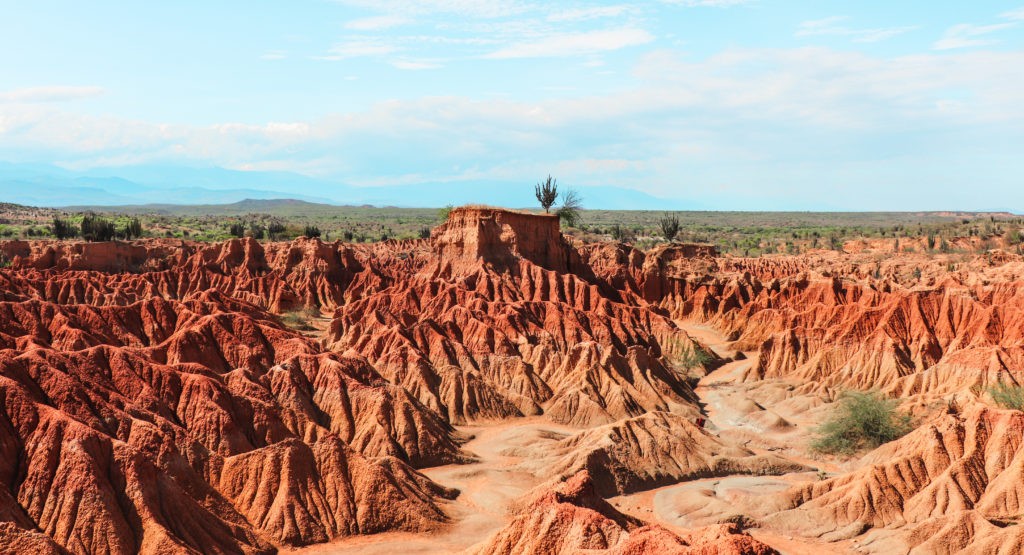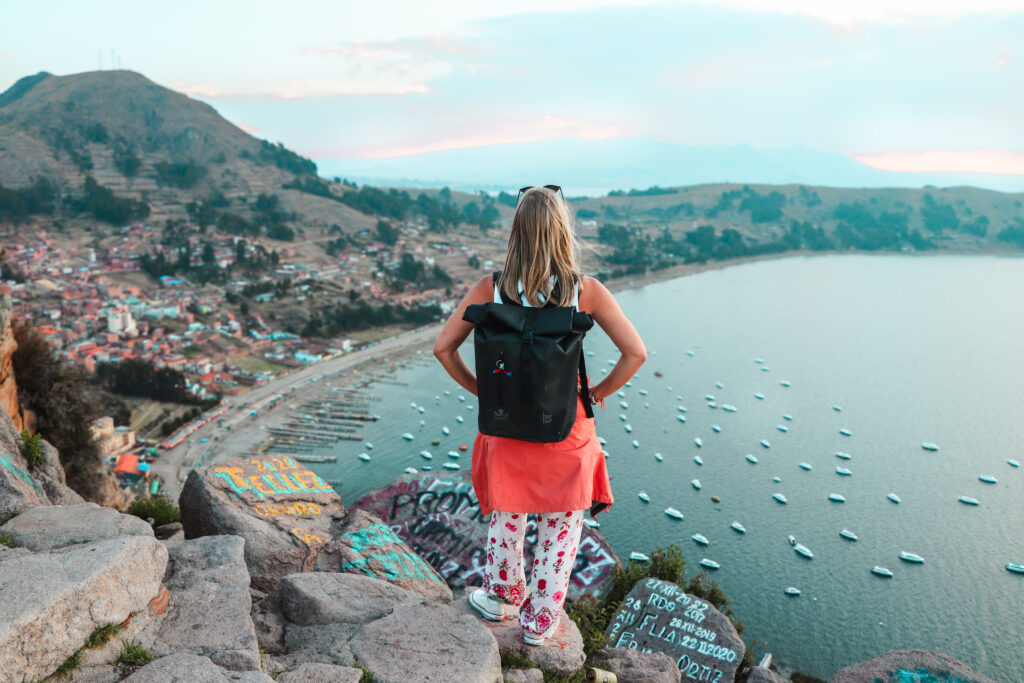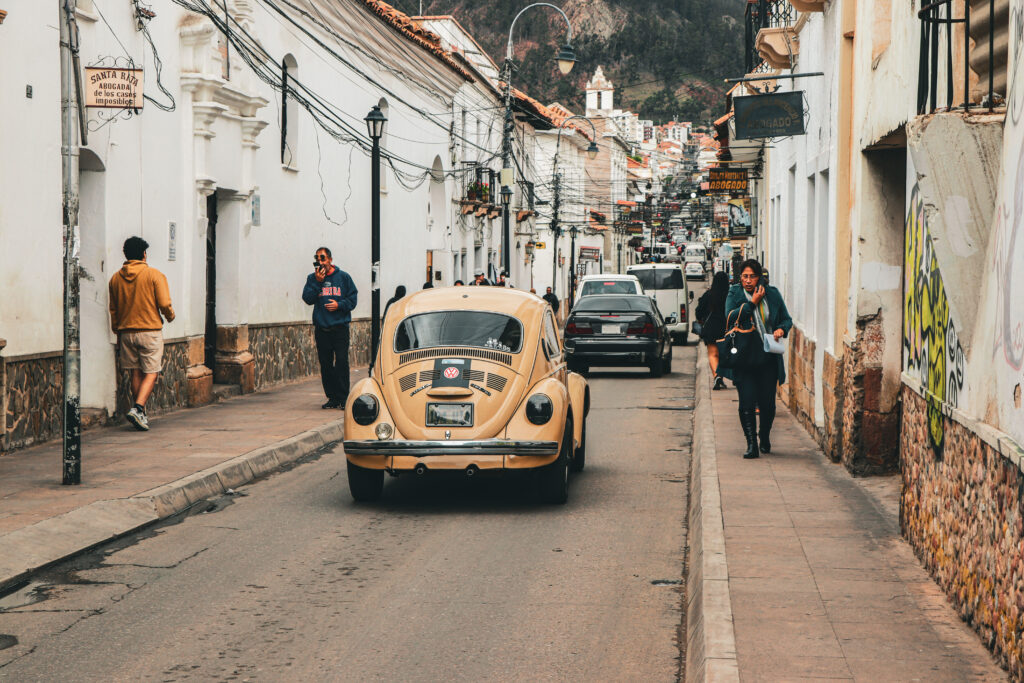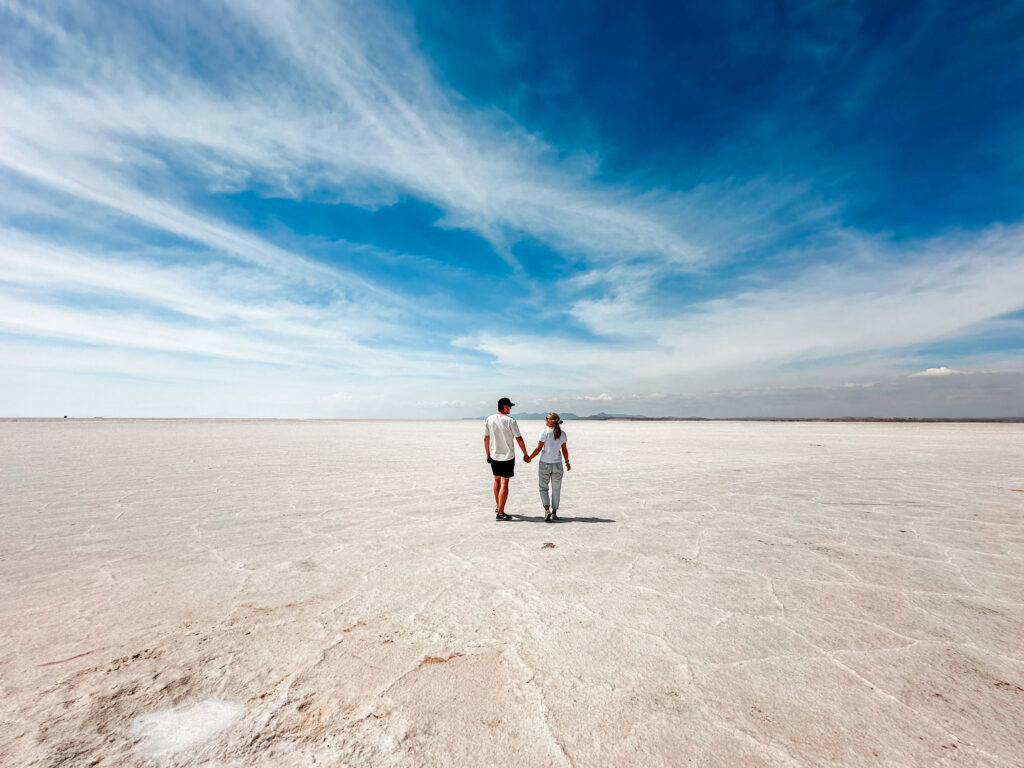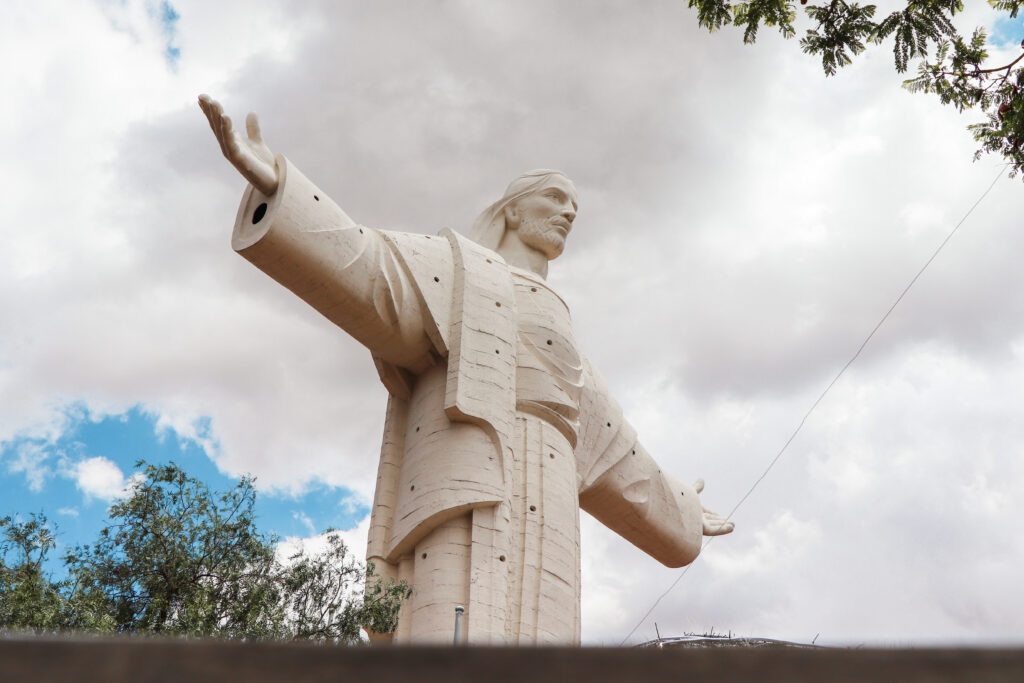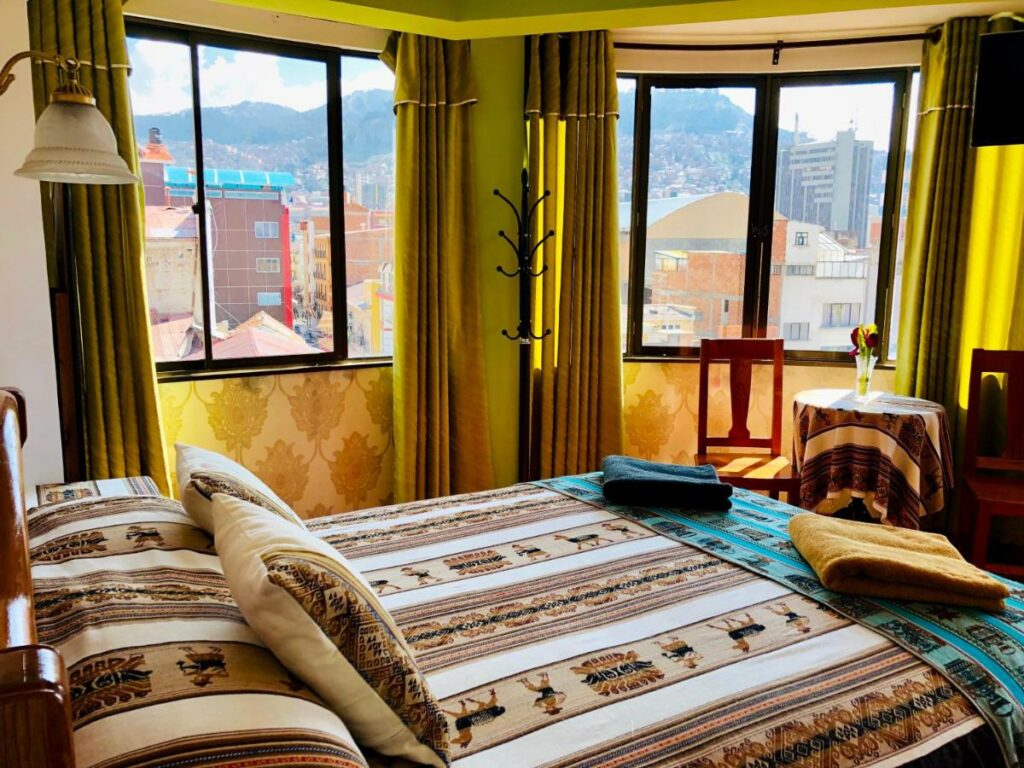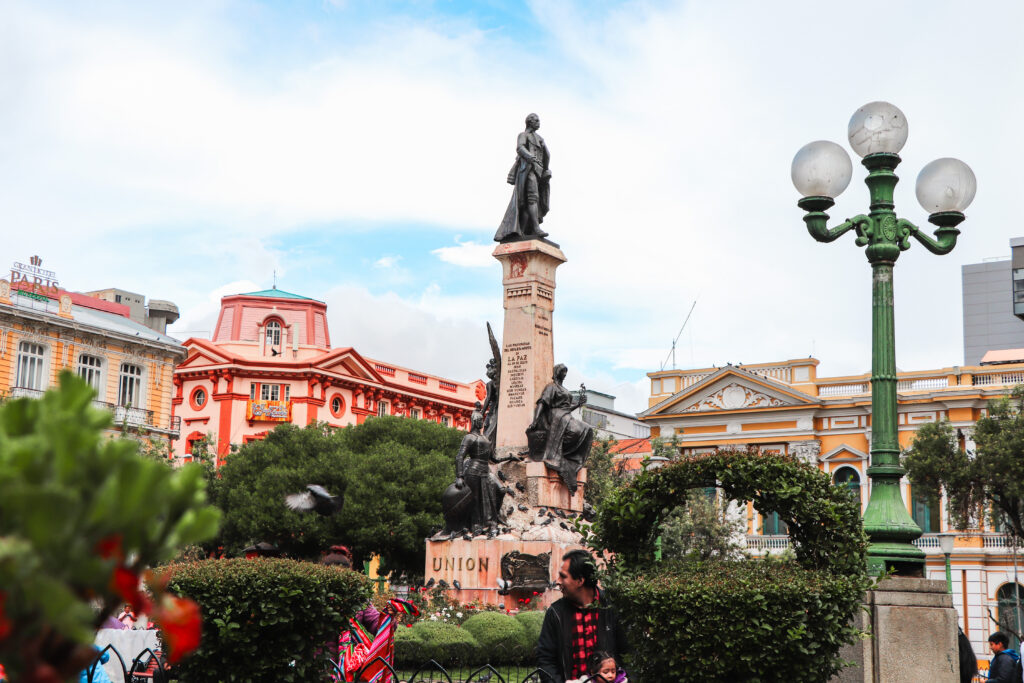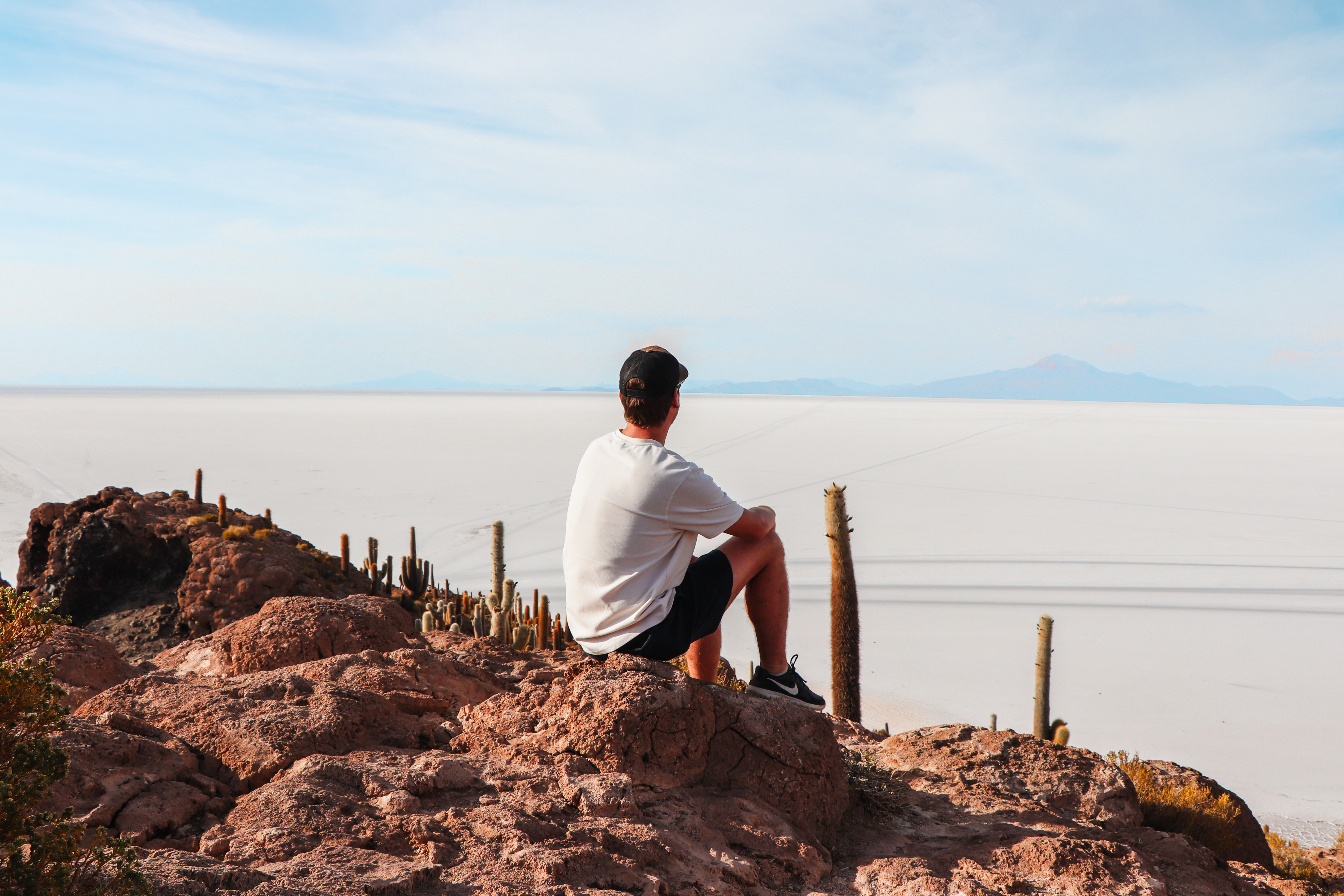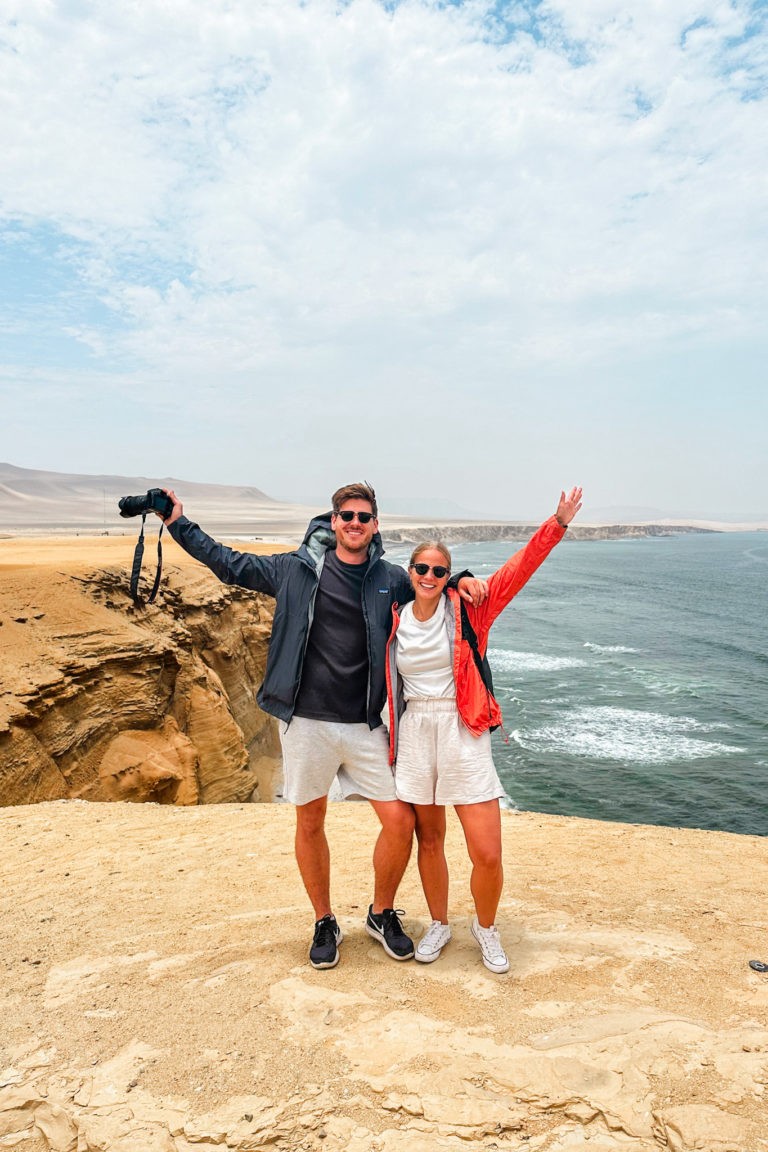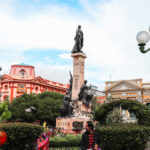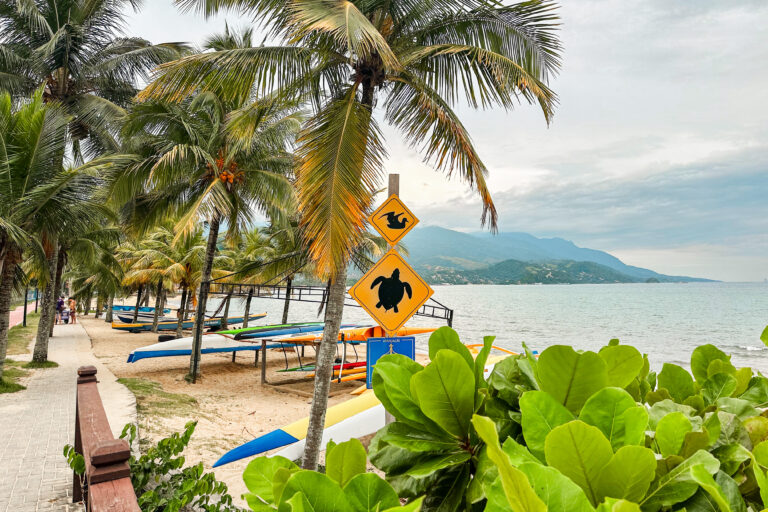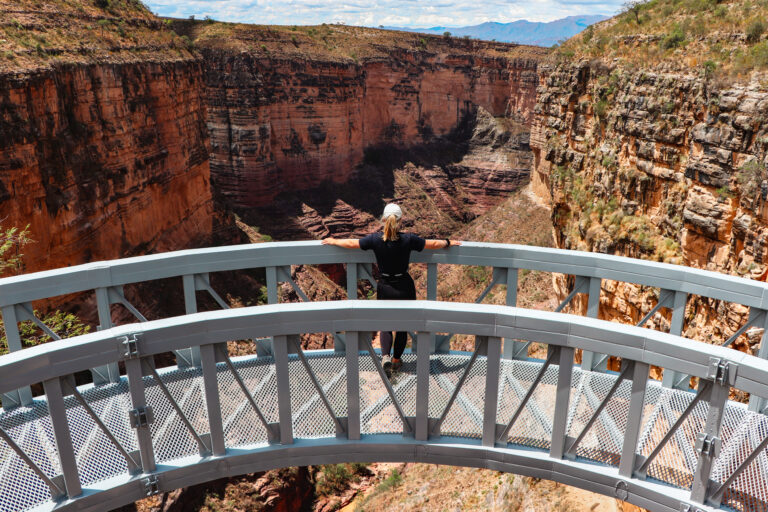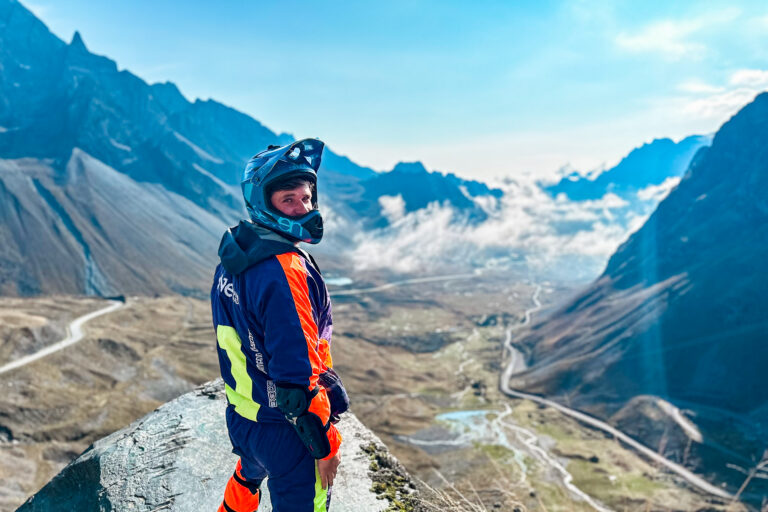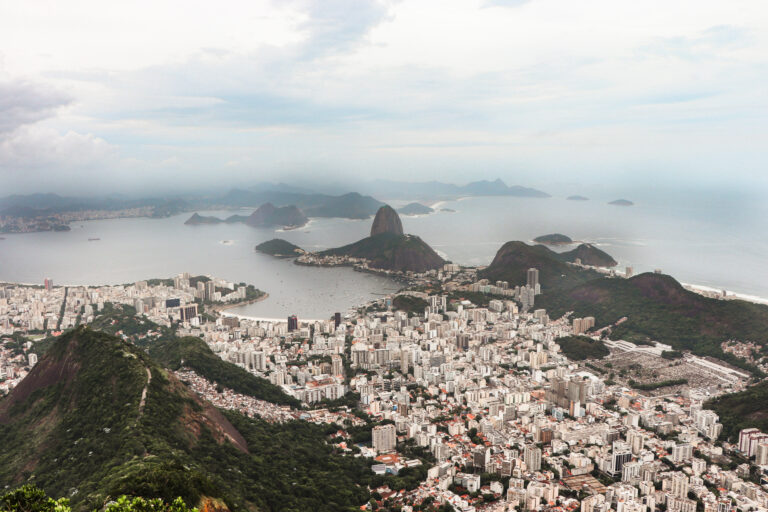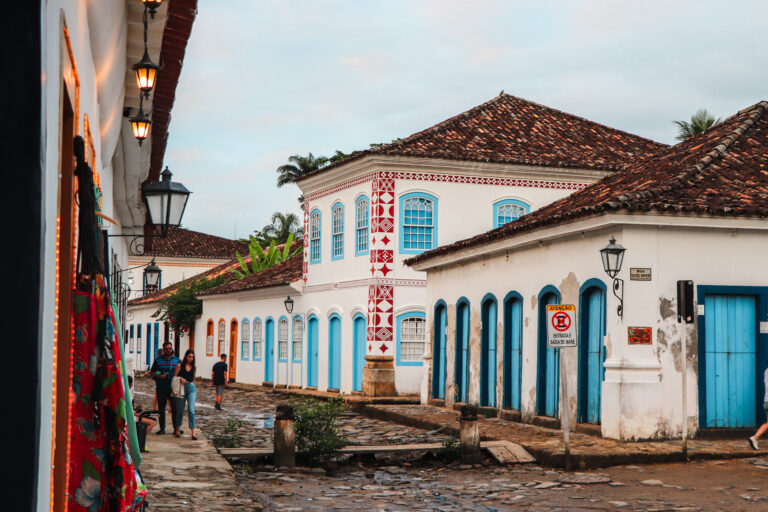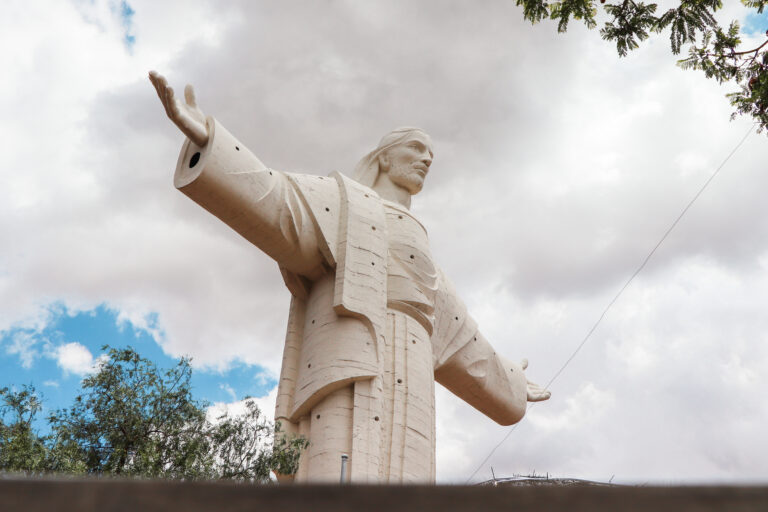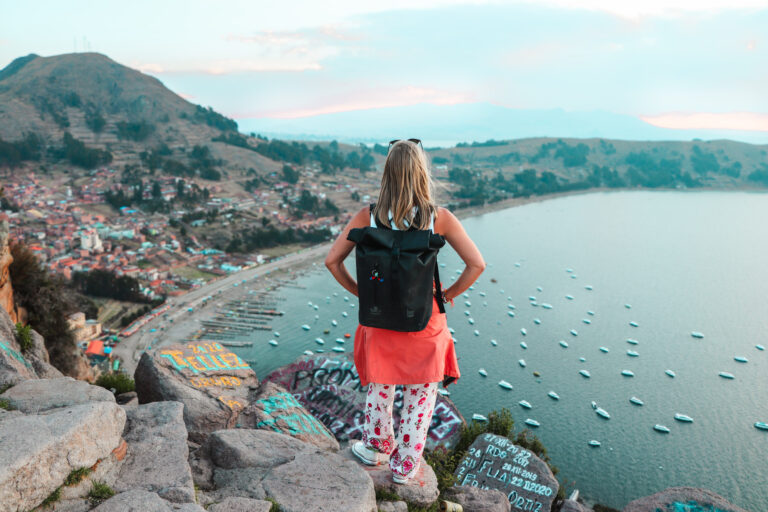Welcome to La Paz, the highest capital city in the world. It’s wild and wonderful, and a perfect place for everybody who loves to ditch the well-trodden tourist paths in exchange for an unforgettable trip through one of the most underrated countries in South America.
After spending over a week in the de facto capital of Bolivia, we can say that La Paz isn’t your average city break. It’s an untamed city full of colonial charm, indigenous heritage, and electrifying adventures, all perched precariously at 3,600 meters (11,811 feet) above sea level.
So, buckle up, as you dive with us headfirst into all of the cool things to do in this very special Bolivian city.

15 Unusual & Unmissable Things to Do in La Paz, Bolivia
After spending our first days in Bolivia on the coast of the beautiful Lake Titicaca in Cochabamba, we arrived in La Paz looking for some big city vibes. And that much can be said, La Paz didn’t disappoint. We had so much fun exploring the city inside-out, so we came up with the -what we think- 15 unmissable things to do and see in this crazy capital.
You wonder why we call La Paz crazy? Well, let’s start with the fun stuff and decide for yourself.
When arriving directly in La Paz, nestled high at over 3,600 meters (11,800 feet) above sea level, prepare to conquer the city but respect the altitude. Take it slow in the first days and let your body acclimate to the breathtaking heights before embarking on bigger adventures.
1. Visit the Mercado de las Brujas (Witches Market)
Visiting the Witches Market in La Paz is definitely on the strange end of the things to do in the city. It’s a fascinating and enigmatic experience. As you wander through the narrow streets, you’ll be surrounded by colorful tents and stalls brimming with mysterious goods. A lot of what we would say “hocus-pocus” stuff is sold there. But that makes visiting this market so special and undeniably adds to the Witches Market’s charm.
You’ll find a variety of traditional medicines and remedies, unique souvenirs, and most intriguingly: Preserved llama fetuses. They are used for offerings to Pachamama, the Andean earth goddess, and are believed to bring good luck and protection when buried under the foundation of a new home or business. The larger the home, the more valuable the offering must be.
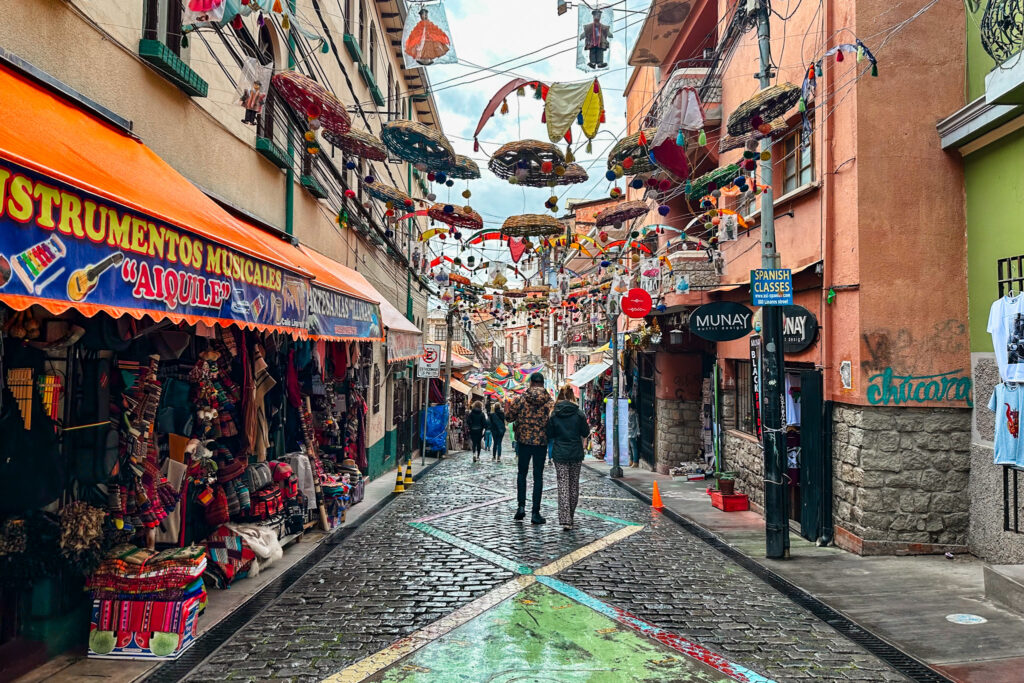

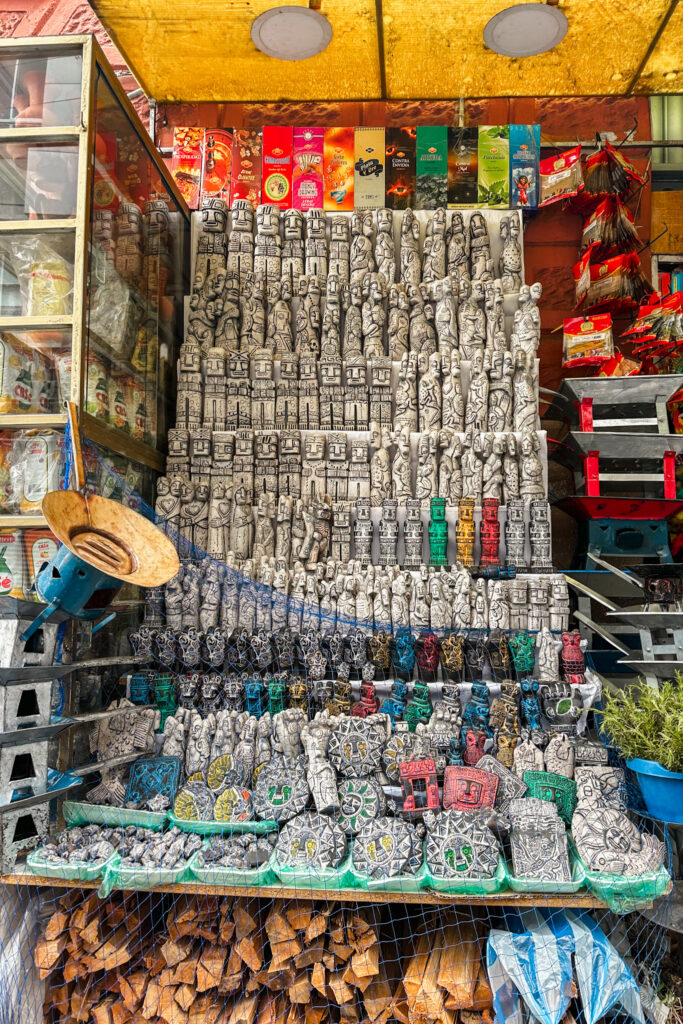
But before you think too much about the size of your home and what offering it may require, let’s better talk about the witch doctors that you find on the market. Those are called Yatiri, and they are -in the eyes of spiritual Bolivians- knowledgeable healers who can prescribe herbal treatments and perform rituals to help visitors with their health issues.
And while we don’t believe in witches, visiting the Mercado de las Brujas was one of the most bizarre things we did while in La Paz.
The Witches Market in La Paz is in the Belén district of the city and within walking distance from downtown. The market is open every day from 9 a.m. to 10 p.m. and is free to enter. If you don’t want to explore the market on your own, most free walking tours have it included in their schedule.

2. Mountain bike the famous “Death Road” (Yungas Road)
Not far from La Paz lies one of the most dangerous roads in the world. The “Death Road” (North Yungas Road) is a famous 37 km (23 miles) long stretch of highway in the Andes mountains that is known for being extremely hazardous. Before the new highway was built, almost 300 people lost their lives on the narrow paths of this road, each year.
Today, the road is closed to all cars, making it a perfect spot for mountain biking.
We had never mountain biked before and were a little scared by the fact that this road once was the deadliest on earth. But because we’ve heard that mountain biking the “Death Road” is one of the coolest things you can do in Bolivia for those looking for an unforgettable thrill, we gave it a shot and it didn’t disappoint.
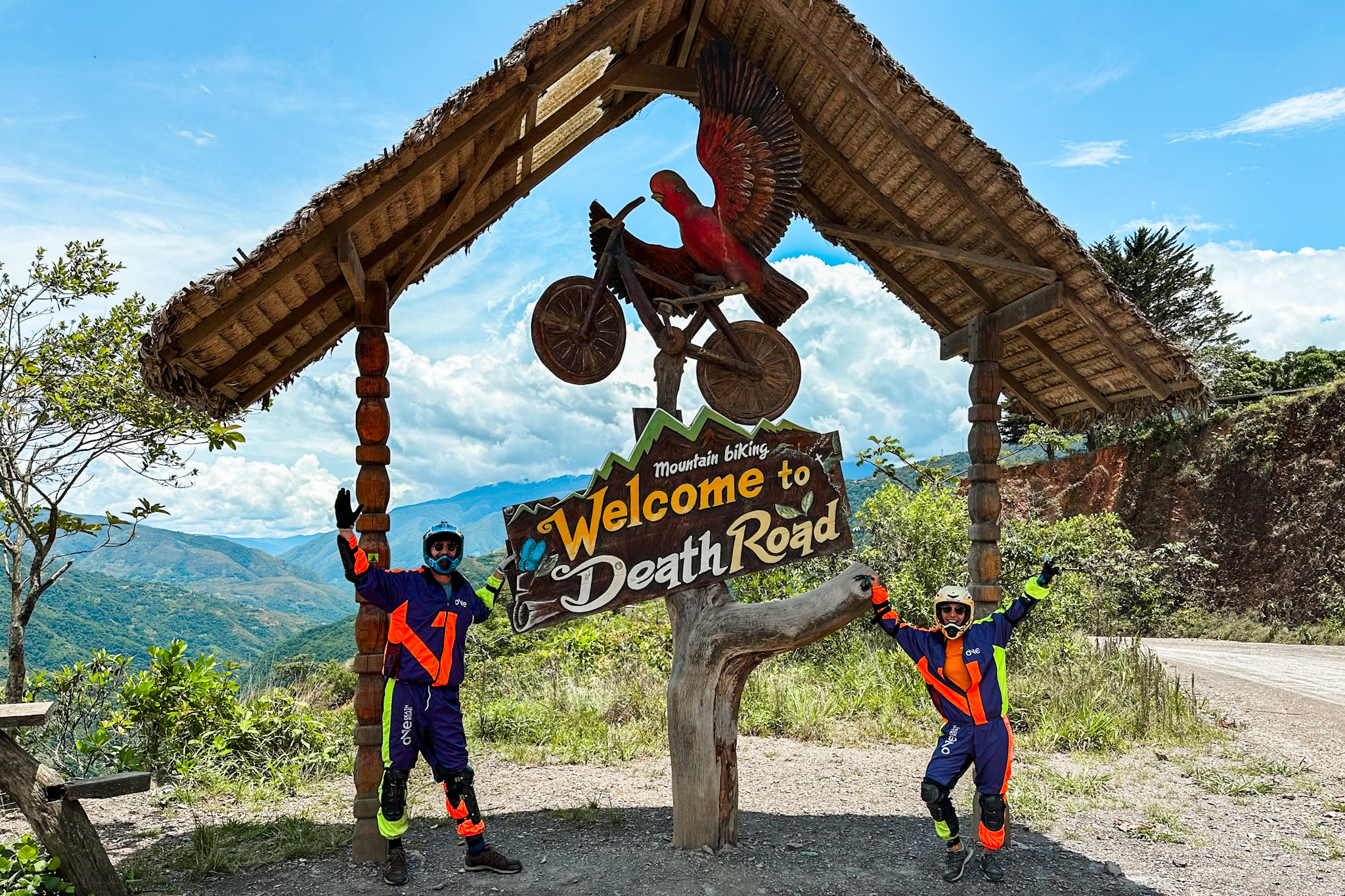
What we loved the most about driving down the Death Road wasn’t the mountain bike experience alone, but the stunning views and changing landscapes that you’ll see as you make your way down. You start your journey high up the mountains (at around 5,000 meters (16,404 feet)) and end your ride in the jungle. It’s a heart-pounding activity, an unforgettable adrenaline rush – extreme, and exciting.
Relevant Reading
A tour to challenge the Death Road by mountain bike costs between 400 BOB (≈ 60 USD) – 600 BOB (≈ 90 USD), plus an entrance fee of 50 BOB (≈ 8 USD). You’ll get a full set of protection (helmet, jumpsuit, gloves, as well as, shin and arm guards), some snacks along the way, an experienced guide, and a “safety car” that follows your group at all times.
The “Death Road” is the only road in Bolivia where you are supposed to drive on the left side. This way drivers have a better view on the edge of the road. But as no more vehicles are driving uphill anyway, we think, you’ll be better off driving in the middle of the road for extra safety.
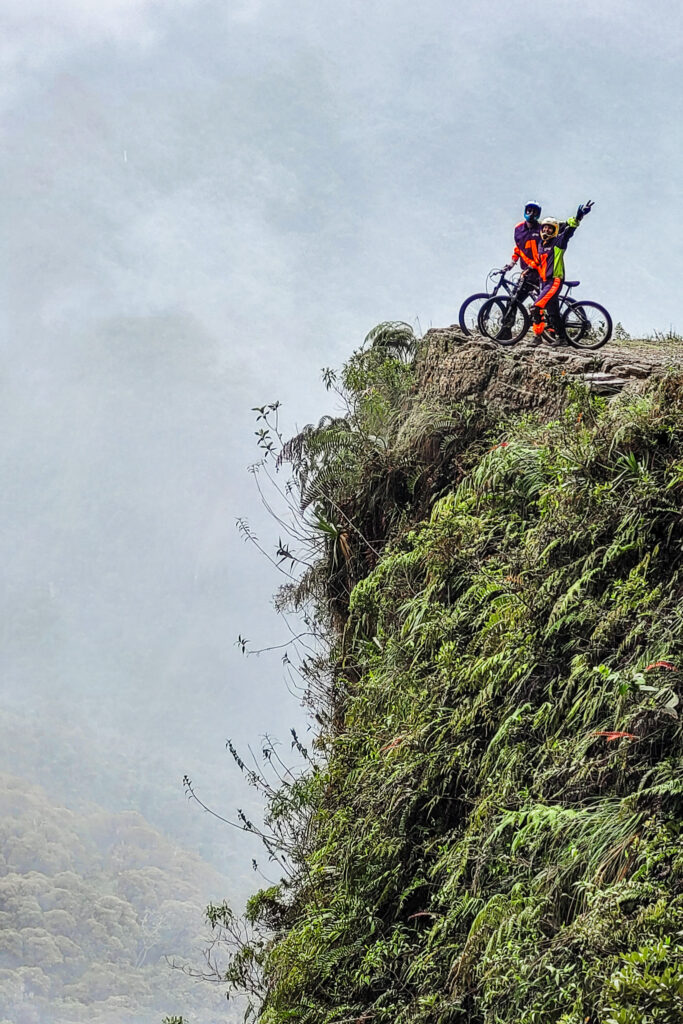
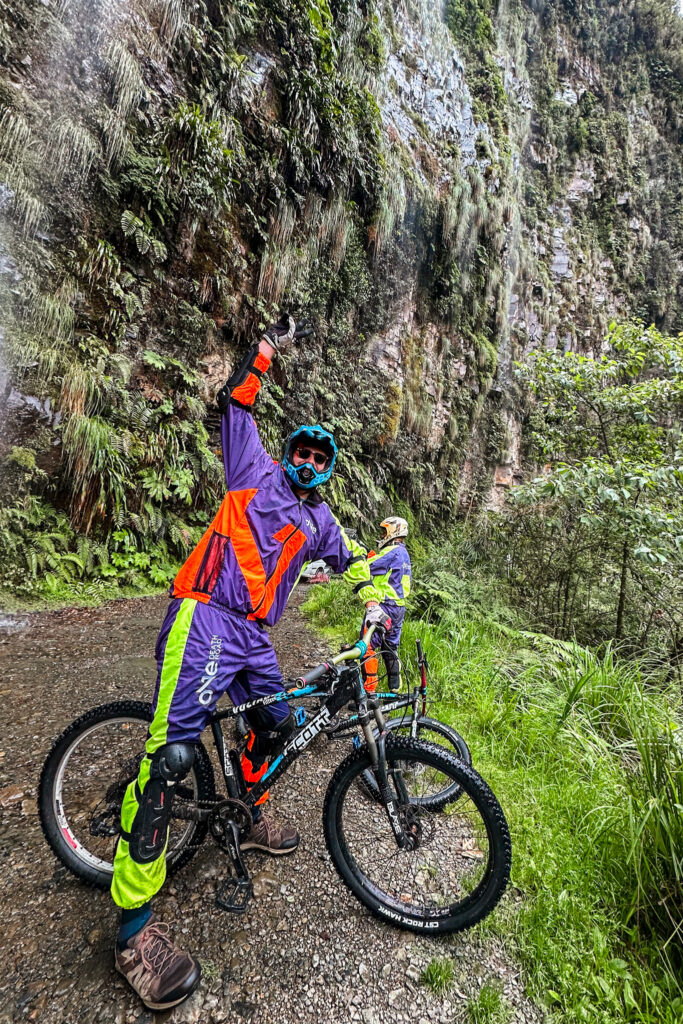
3. Visit the La Paz Prison (Penal de San Pedro)
Another crazy thing to do in La Paz is visiting the La Paz prison. It’s a fascinating prison, since after several protests from the inhabitants and due to the high operational costs of maintaining the prison, the La Paz government decided to hand over the responsibility to the prisoners. This means that the prison is mostly run by the prisoners themselves. There are not more than a handful of guards protecting the building from the outside and controlling who gets in and out. More importantly so, as the prisoners are allowed to bring their families to live with them to save costs.
To sustain operations, prisoners are required to pay for their cells and meals, resulting in the development of an entire economy within the prison. Although prisoners primarily generate income through illegal activities, rebellions and protests have ceased, rendering the area surrounding the prison safer.
The La Paz prison is right in La Paz downtown, next to the Plaza de Square. In case you want to combine your visit to the prison with a city tour, Free Walking Tours usually start at this place.
Don’t ever take a tour to go inside the prison, as there are reported cases of tourists held hostage in the past. While some people from the streets still offer you to go inside, the tours are officially forbidden and illegal.
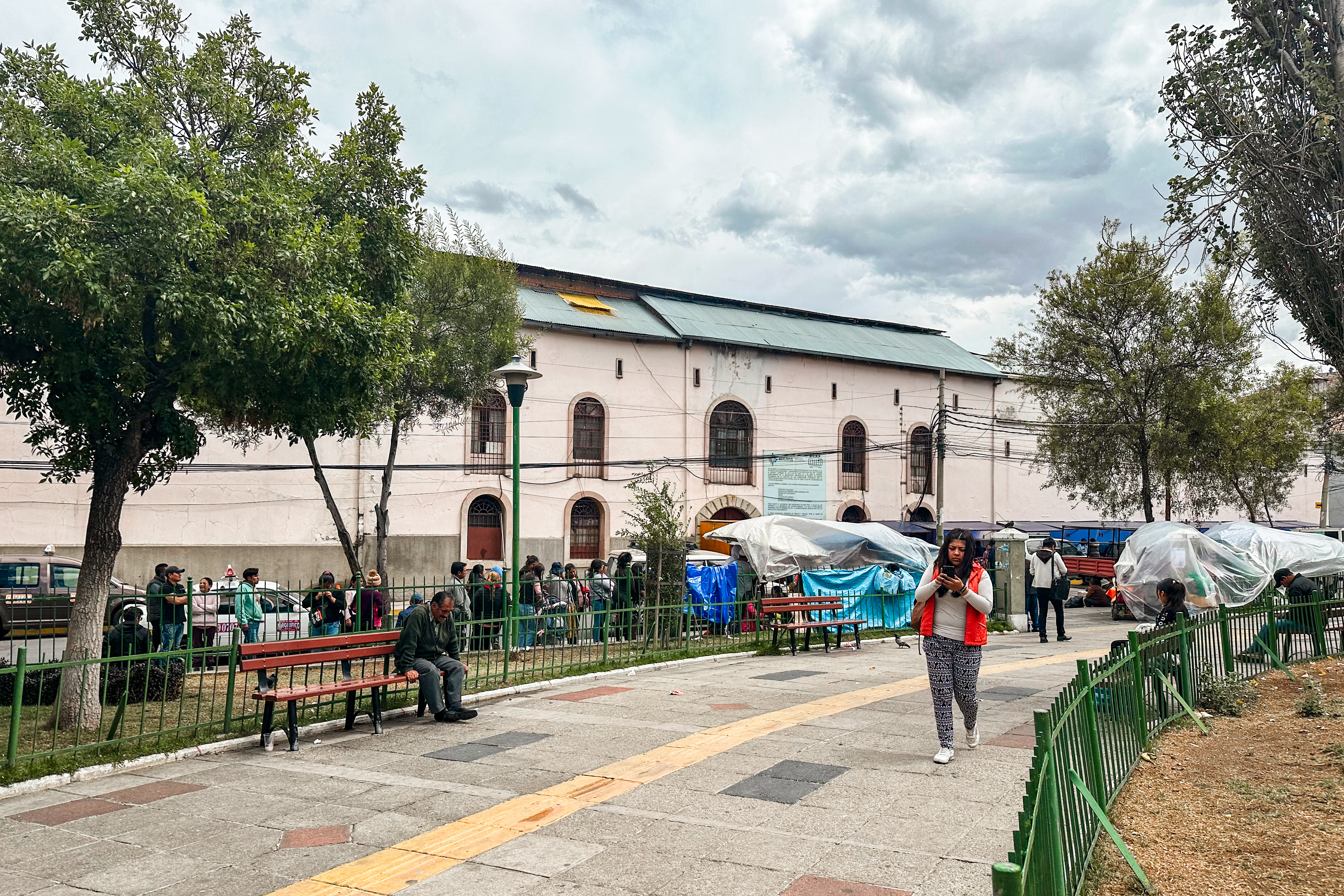
4. Watch the Cholita Wrestling
Cholitas are indigenous women, who proudly maintain their traditional clothes and cultural identity. You’ll see them everywhere around Bolivia – on the streets, behind market stalls, in local kiosks, or wrestling on stage. And there we go, another crazy thing to do in La Paz: Watching women fight on stage.
But there’s more to it than meets the eye. The Cholita Wrestling is about defying stereotypes, fighting against racism, and cheering diversity. While Cholitas in Bolivia were historically subject to discrimination, they have become symbols of resilience, empowerment, and cultural pride. Seeing these strong women fighting on stage challenges gender norms, social prejudices, and perceptions.
Today, Cholita Wrestling is mostly a tourist attraction with very few locals watching the show. And while it belongs on our list of unusual things to do, it wasn’t something for us. But if you’re looking to see this crazy spectacle, you can book a ticket for around 100 BOB (≈ 15 USD). Shows take place every Thursday (4 pm – 6 pm) and Sunday (5 pm – 7 pm).
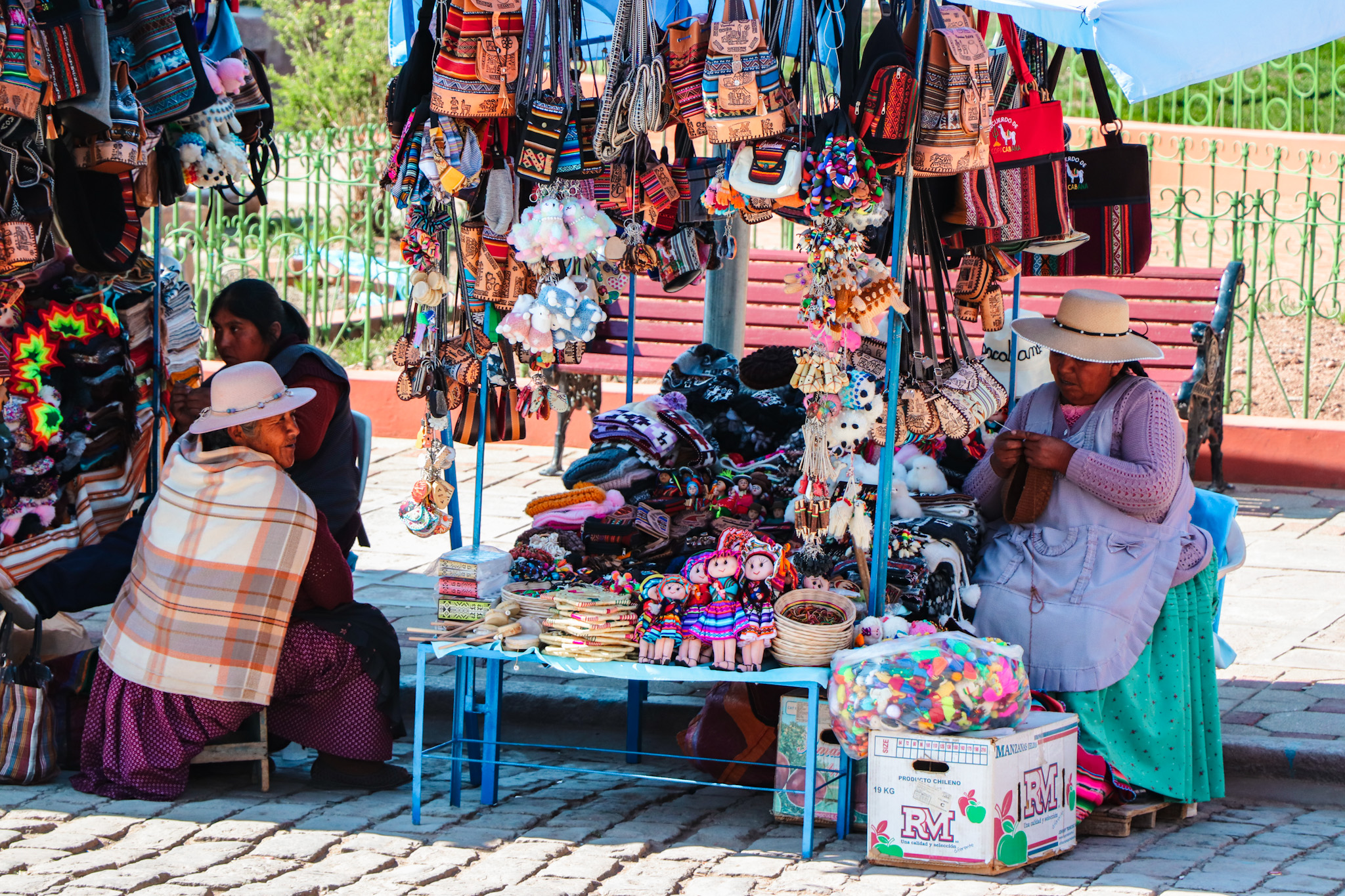
5. Join a Guided Free Walking Tour and see the City
Now that we’ve covered the craziest things to do in La Paz, let’s talk about the more relaxed things.
Taking a free walking tour through La Paz is a perfect opportunity to see all of the beautiful places in the city, such as the Witches’ Market, the Mercado Rodríguez, the San Francisco Church, and Plaza Murillo. If you followed us along for some while, you know that we always take a free walking tour on the first days in a new city. That way you get to know your new hood and can plan your next days in town.
Red Cap Walking Tours is the company we joined for the Free Walking Tour around La Paz. They did a great job explaining all of the sights in a fun and captivating way. Their tours start at 10 am and 2 pm and last 2 to 3 hours. The average tip for a free walking tour in La Paz is between 35 BOB (≈ 5 USD) and 70 BOB (≈ 11 USD) per person.
Free Walking Tours in Bolivia are not free, due to government regulations. Businesses aren’t allowed to provide their services at no cost. So, most Free Walking tours require you to purchase a ticket for the price of the tax they’re obliged to pay (usually around 20 BOB (≈ 3 USD)). Note that your contribution to the guide is not included in this price.
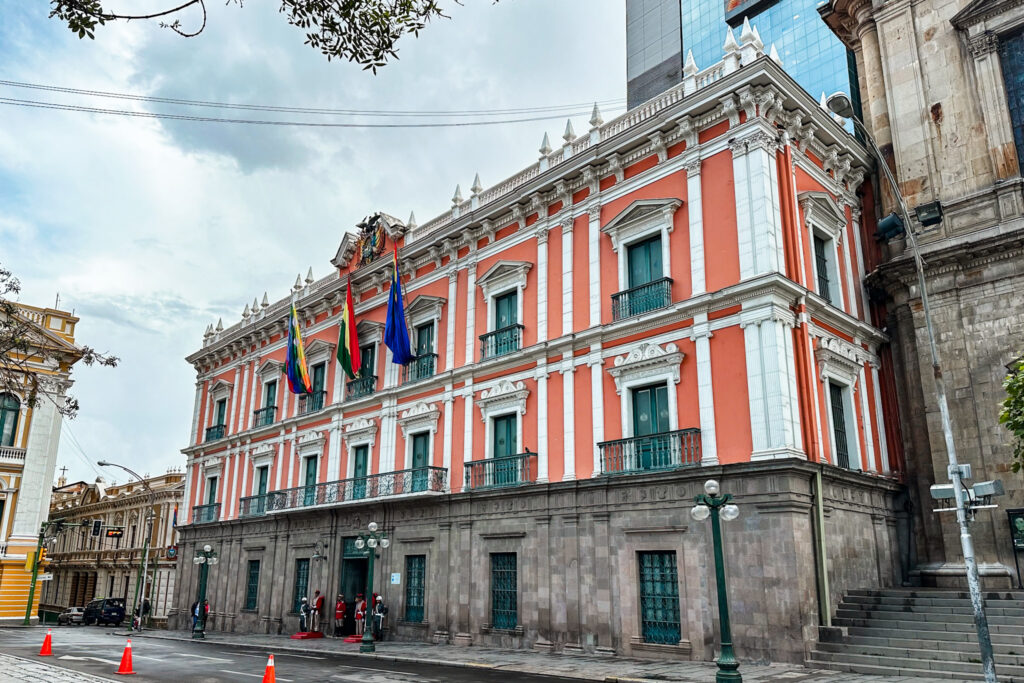
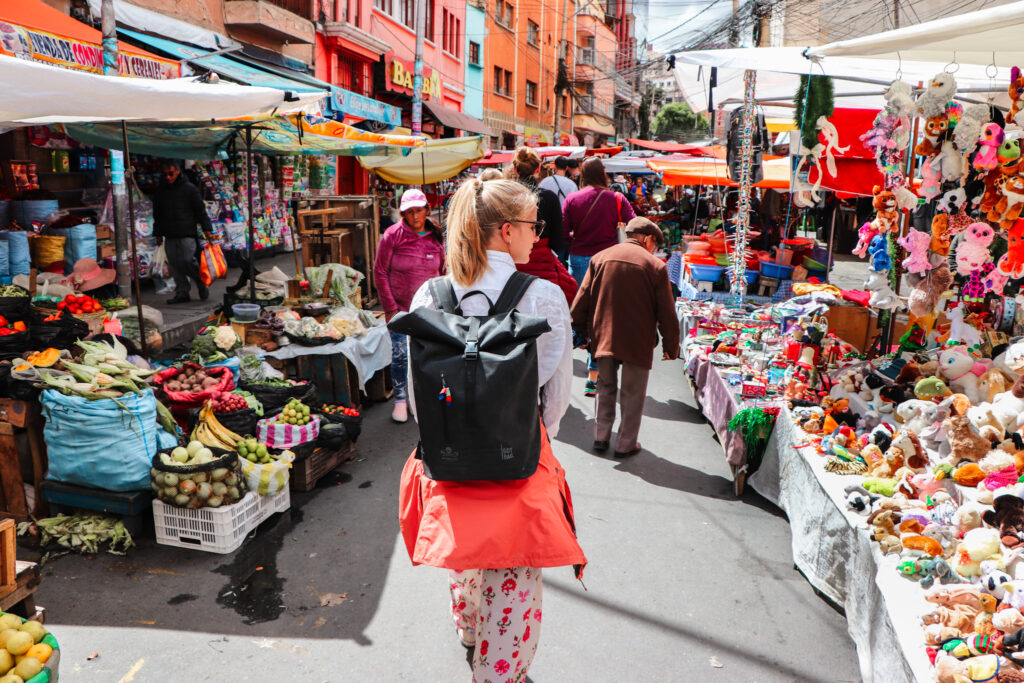

6. Tour the Basilica of San Francisco
If you choose to join a Free Walking Tour in La Paz, you will stop by the Plaza de San Francisco with its beautiful eponymous church. The Basilica of San Francisco dates back to the colonial era in Bolivia. What is special about the Basilica is that it uniquely blends European and Indigenous cultures. On its façade Catholic elements are combined with Indigenous symbols that represent important and defining parts of Bolivian history.
You can take a tour to learn more about the San Francisco church and visit the church tower for a beautiful panoramic view over the city center. The entrance fee is 20 BOB (≈ 3 USD) and the church is open every day from 6:30 am until late at night. Masses take place at 8:30 am and 6:30 pm.
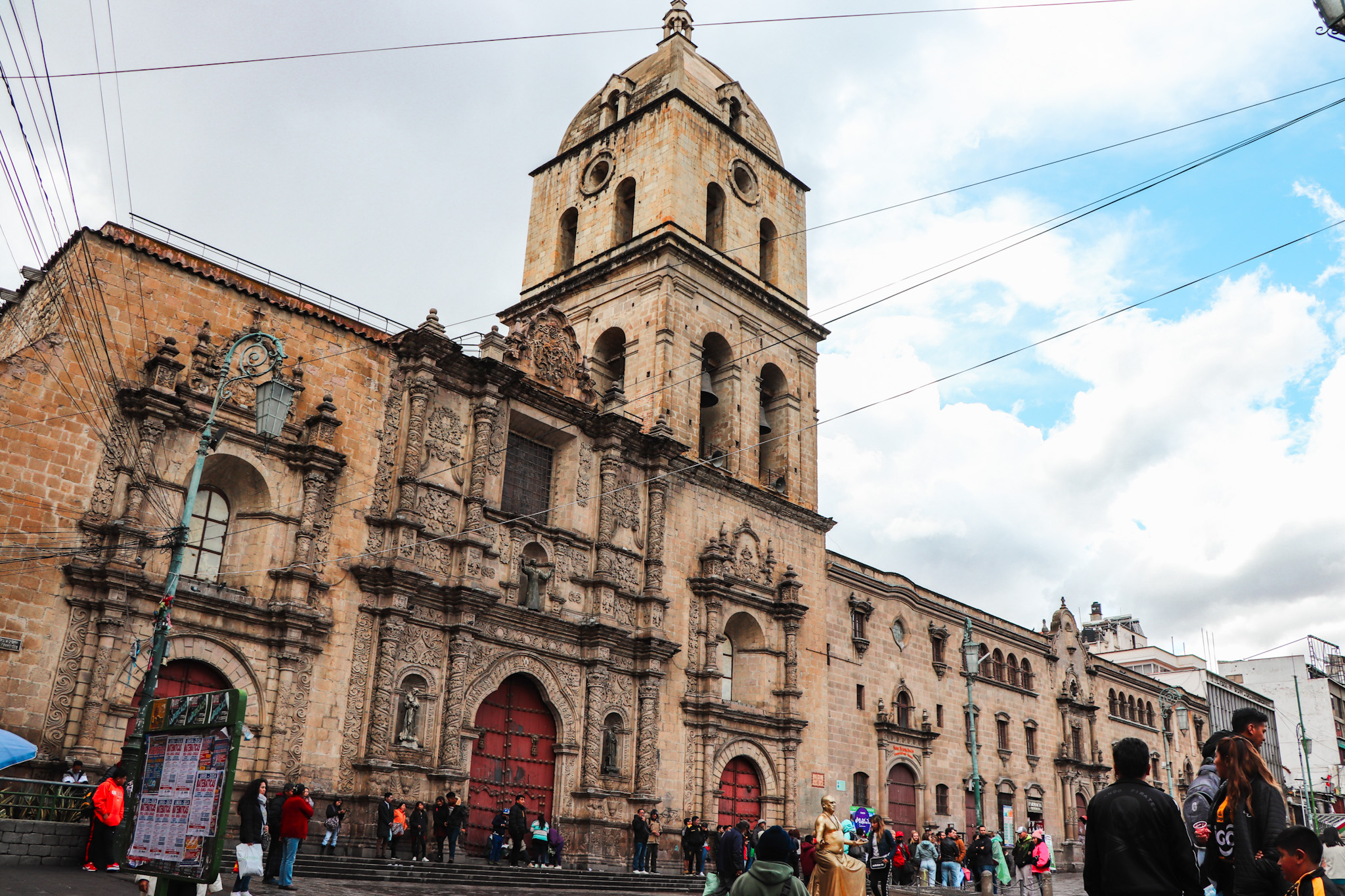
7. Take a walk down Calle Jaen
Calle Jaen is a beautiful historic street located in La Paz, Bolivia, that is full of colonial charm. When walking through the cobblestone street, you’ll see plenty of old-town houses painted in all different colors. Most of the houses in Calle Jaen date back to the 16th century when Pedro Domingo, the famous leader of the La Paz revolution that fought for the Bolivian independence, once lived in this street. His house, the Casa Murillo is a museum today and can be visited to see some colonial art, furniture, and historical artifacts from this time.
When we visited Calle Jaen, it reminded us of the beautiful San Lazaro district in Arequipa, the “White City” of Peru. Houses there weren’t as colorful as in Calle Jaen, but the narrow cobblestone streets and old buildings made us feel the colonial charm.
Relevant Reading
Calle Jaen can be found in the Jaen district of La Paz and a short 9-minute walk from the Plaza Murillo, the main square in La Paz. Besides visiting the street, you have the option to visit the Casa de Murillo Museum or the Museum of Precious Metals. We didn’t go to either of them, but if you are planning to dive a little deeper into the history of La Paz, we think it’s a good option to go there.
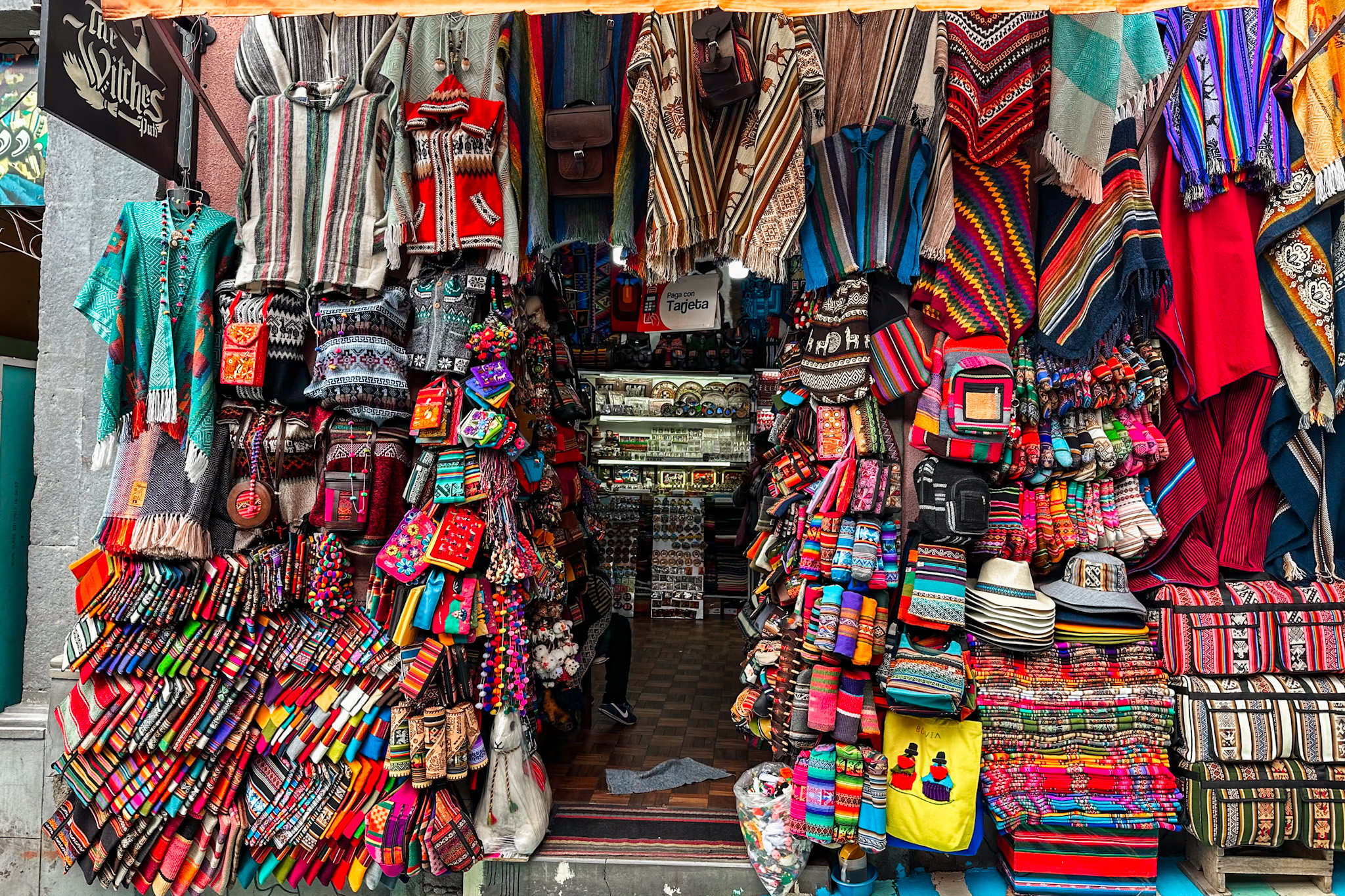
8. Take the Mi Teleferico (Cable Car) to El Alto
Cable cars are a popular and efficient mode of transportation that can be found all around South America. They’re great for overcoming large distances in densely populated areas, where the streets are narrow and buildings stand closely next to each other.
La Paz is one of those cities. It is located in a valley, surrounded by tower mountains and built on uneven, hilly terrain, making it hard to navigate around the city. We’ve seen traffic jams every single day. So, using the cable car system is such a lifesaver for all the locals communing from and to La Paz downtown
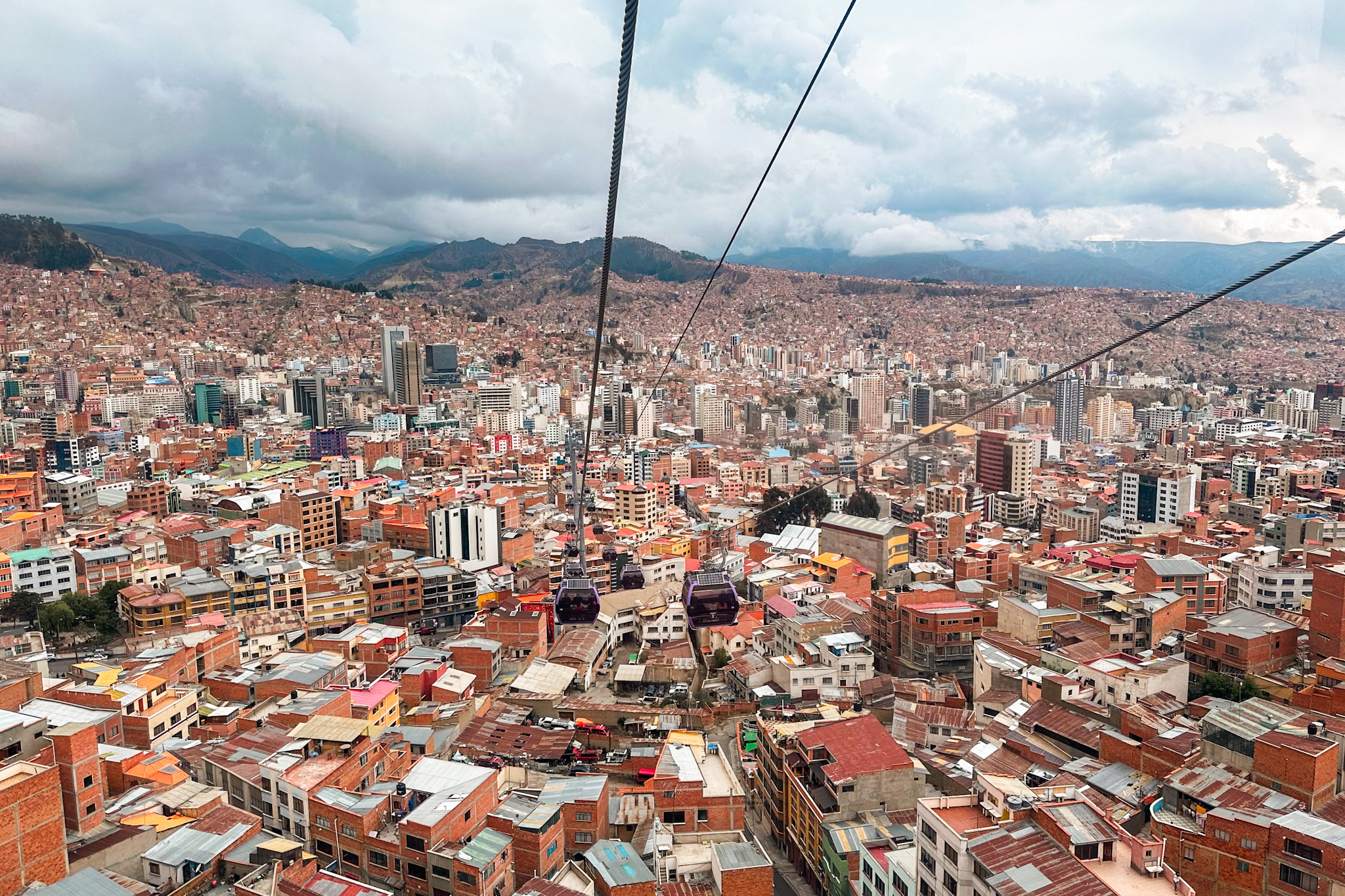
But it’s a cool attraction too. Take a cable car ride in the world’s most extensive teleferico system and get to see the city from a birds-eye perspective. We’d recommend you take the red line up the mountain to the Mirador Linea Roja. From there you’ll have a great view of the megacity and surrounding mountains. If you want to explore more, you can switch lanes to travel around the valley rim of La Paz.
Using the cable cars in La Paz is very convenient and affordable. The price for each ride is 3 BOB (≈ 0 USD) and the cable cars operate every day between 5 am and 10 pm. Keep in mind that you need to pay every time you change lines, so take some coins with you to travel around the city. You can find the current line network of the cable cars in La Paz here.

9. Enjoy the views on Illimani and Huayna Potosi
When taking a cable car ride up the hills around La Paz you’ll get to see a beautiful view of the Cordillera Real mountain range. If the weather is good, you can spot two of the highest mountains in South America, the Huayna Potosi 6,088 meters (19,974 feet) and Illimani 6,438 meters (21,122 feet). Take some time to enjoy this beautiful view, before you make your way down the city.
In case you are a professional hiker, Huayna Potosi is one of the most accessible 6,000 meters (19,685 feet) mountains in the world, due to relatively straightforward climbing routes. Keep in mind that it is still a high and challenging mountain, so only consider climbing it if you know what you’re doing.
10. Visit the market in El Alto
The El Alto Market is a huge market that expands almost through the whole El Alto district. There you can find almost anything for the most affordable prices in the whole of La Paz. As you walk through the market, you’ll see shamans and witch doctors performing their rituals, all different kinds of fruits and vegetables, and anything else you can imagine. It’s a crazy thing to do in La Paz if you are looking to experience an authentic Bolivian market.
The El Alto market takes place every Thursday and Sunday. Take the Red Line to El Alto. Keep your belongings close to you as the market gets very crowded and there are reported cases of petty theft. Be aware, but don’t be afraid. Because the market gets crowded, it can be hard to navigate at times. We’d recommend to follow one street up until the end before you make your way back.
If you don’t want to squeeze yourself through the masses of the market, consider taking the Blue Line cable car that drives right above the market street. From there you’ll get a perfect view of the market.
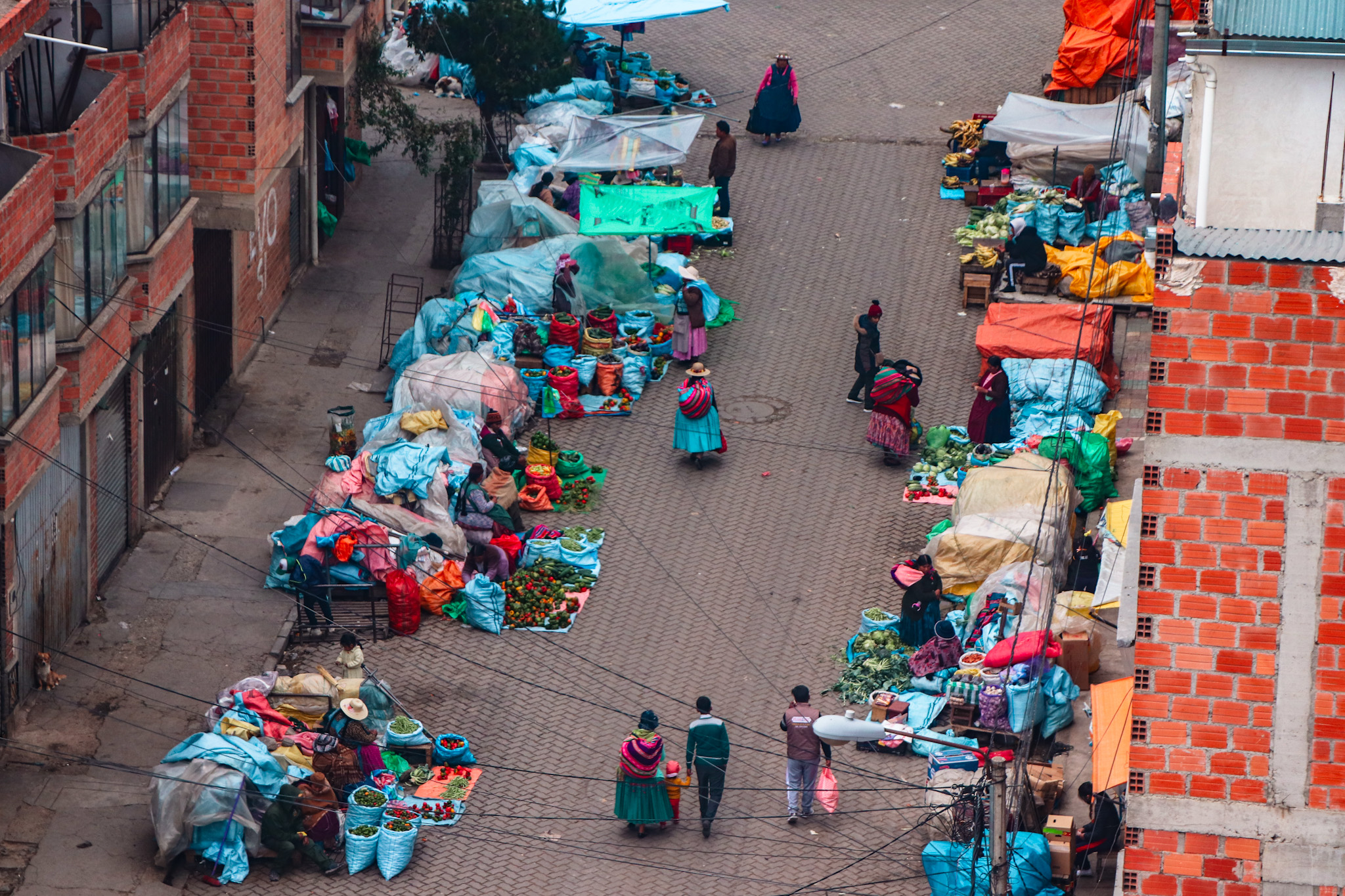
11. Hike through the Valley of the Moon
The Valley of the Moon is a surreal landscape with unique rock formations, located not more than 10 km (6 miles) outside La Paz. While the Valley of the Moon technically isn’t a valley at all (but rather a maze of eroded canyons formed by thousands of years of wind and rain), it’s not less impressive.
Hiking the mostly flat trails into the labyrinth of spires feels like walking on the moon. The terrain looks otherworldly and greyish like you’d enter a whole new world. If we wouldn’t have visited the Tatacoa Desert in Colombia, we wouldn’t have believed how unnatural those landscapes are.
Plan for your visit to the Valley of the Moon a full day from La Paz. To get to the valley you can either book an organized tour or take one of the local minibuses (“collectivos”) to get there. Look for a minibus on the Plaza Humboldt that has a sign with “Mallasa” behind its windshield. Prices for a guided tour to the Valley of the Moon start from around 350 BOB (≈ 53 USD), while a one-way ticket for a minibus only costs around 5 BOB (≈ 1 USD) plus an entrance fee of 15 BOB (≈ 2 USD).
Relevant Reading
12. Play a round of golf at the highest golf course in the world
The La Paz Golf Club holds the honor of being the highest tournament standard golf course in the world. If you are an avid golfer, don’t miss out on the chance to play a “breathtaking” round of 18 holes 3,600 meters (11,811 feet) above sea level. Be prepared for longer drives and shorter rollouts, due to the thinner air.
As backpackers, understandably, we didn’t bring our golf outfit with us, so there was no chance to visit the golf club. (No, it wasn’t because we hadn’t played golf for a long time and didn’t want to embarrass ourselves!)
The club is open to everybody and doesn’t require a membership. Tourists and guests currently pay an 18-hole green fee of 450 BOB (≈ 68 USD) (weekends) and 380 BOB (≈ 57 USD) (weekdays). Look up the current prices and opening times on the official La Paz Golf Club website.
13. Chacaltaya Ski Resort
The Chacaltaya mountain was once the home of the highest ski resort in Bolivia and the world. At over 5,400 meters (17,717 feet) people used to ski on the 18,000-year-old glacier until the resort closed its activities in 2005. The reason for it being the global warming and that in recent years the glacier was almost always snow-free.
Relevant Reading
While you cannot ski anymore today, the mountain still offers breathtaking views of La Paz, the Illimani, and Huayna Potosi Mountains. You can even set out on a straightforward, 100-meter, high-altitude climb to the summit of Chacaltaya. If you decide to visit the Chacaltaya, put on your warmest clothes. Strong winds make the already low temperatures feel freezing.
To get to the Chacaltaya you can take a 1.5-hour bus ride from La Paz or visit the mountain as part of a tour. Most tour operators combine the visit to the Valley of the Moon with the Chacaltaya mountain. Expect to pay around 150 BOB (≈ 23 USD) for the tour, plus an extra 30 BOB (≈ 5 USD) entrance fee to the mountain.
14. Day trip to Copacabana to explore Lake Titicaca
If you flew directly into La Paz, then chances are that you haven’t had the chance to visit Copacabana. Copacabana is a small, laid-back town on the coast of Lake Titicaca. Life in Copacabana is very chilled, with great boat trips to the famous Isla del Sol and Isla de la Luna. It’s a perfect place to visit for a day trip or -if you have some more days- a weekend trip from La Paz.
Relevant Reading
You can get to Copacabana from La Paz by bus or as part of an organized day tour. Buses to Copacabana leave La Paz every day in the morning from the Terminal De Buses and the ride takes around 4 hours. Expect to pay around 50 BOB (≈ 8 USD) for a one-way ticket, or around 270 BOB (≈ 41 USD) for a day tour.
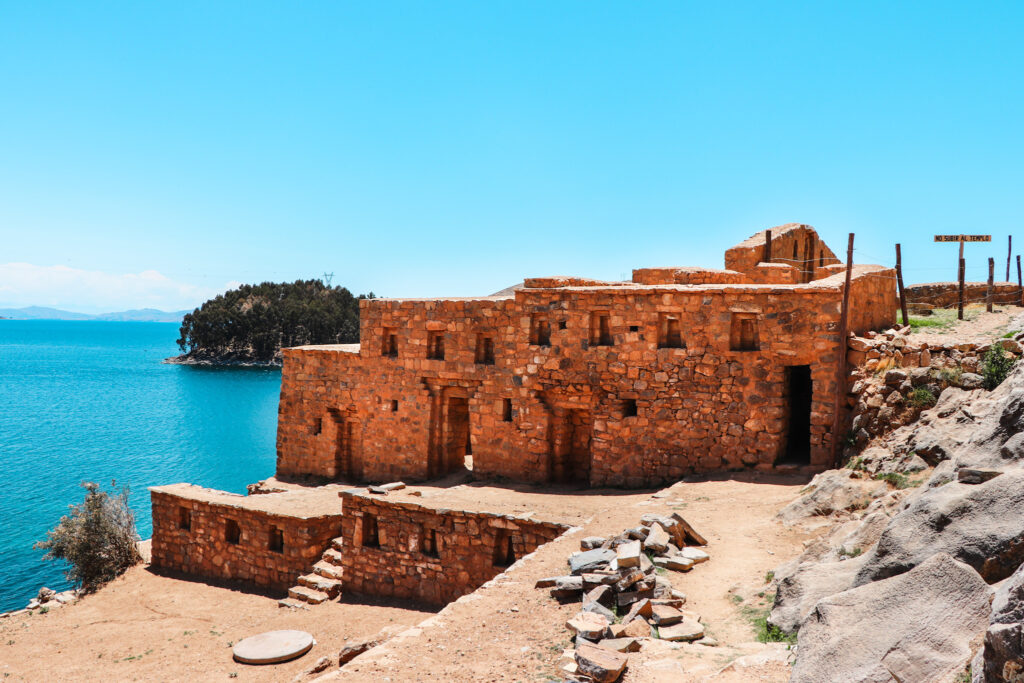
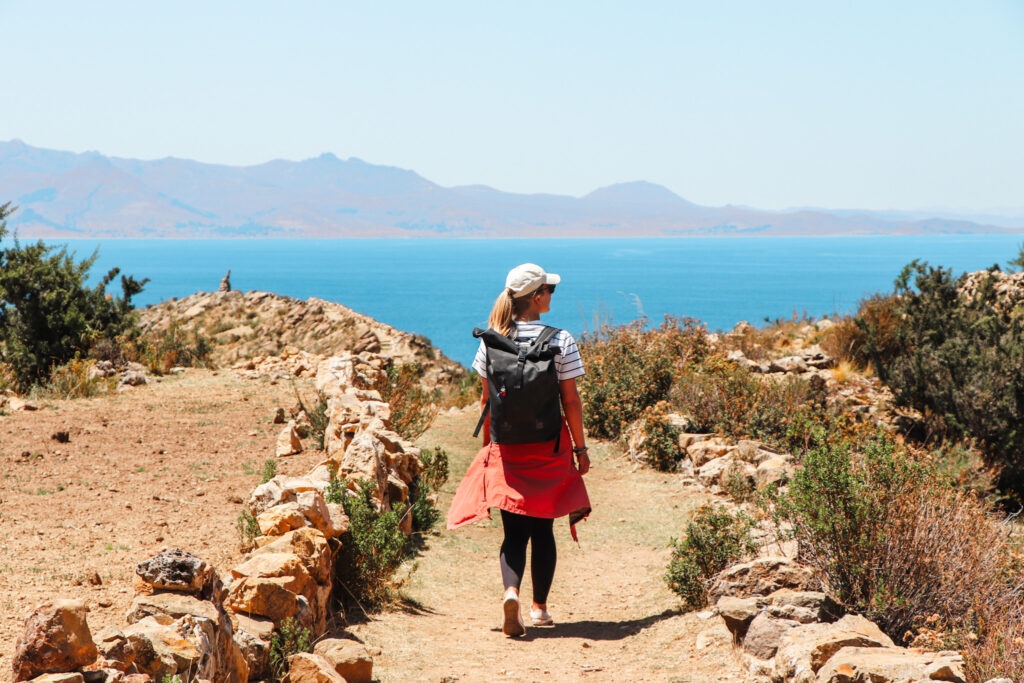
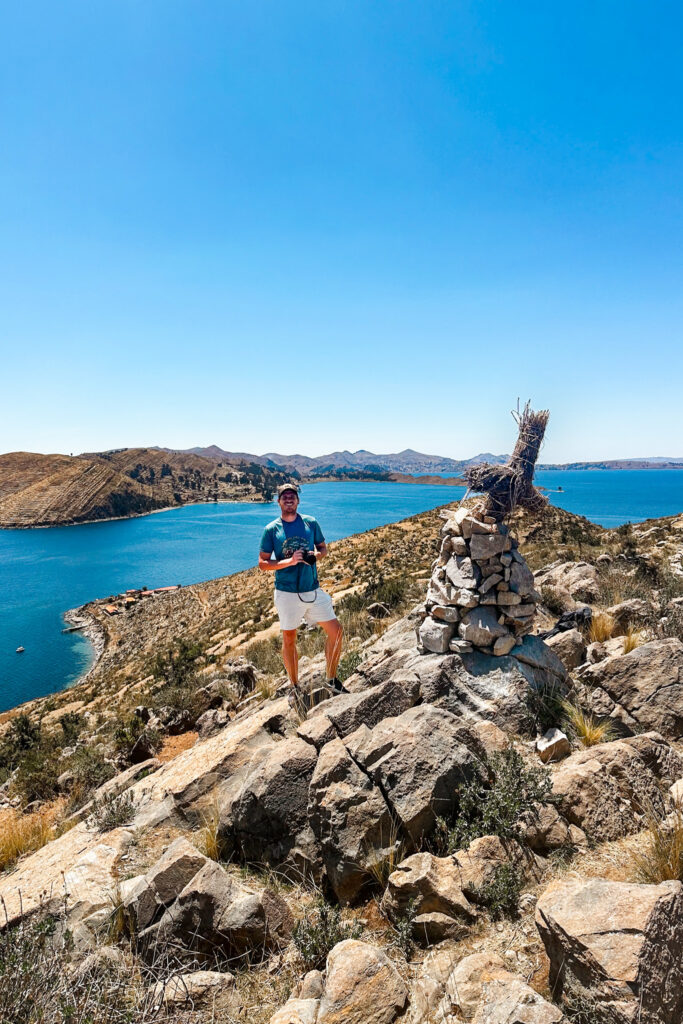
15. Visit the mysterious Tiwanaku ruins
The Tiwanaku ruins are an ancient UNESCO World Heritage Site located just a 1.5-hour drive from La Paz. It’s the most important archeological site in the Bolivian Andes. The remnants from the ruins in Tiwanaku date back over 1900 years, making it one of the oldest discovered sites in Bolivia.
We weren’t too excited about visiting the Tiwanaku ruins. While some of the pictures of the ruins were pretty impressive, we already had seen so many ruins at this point of our travel. So, we decided to skip visiting this site. Nonetheless, if you haven’t traveled to the many Inca ruins in Peru, definitely try to fit a day in Tiwanaku into your schedule.
The best and most convenient way to get to Tiwanaku is by taking a tour from La Paz. A guided day tour from La Paz to the Tiwanaku ruins costs around 100 BOB (≈ 15 USD).
How to get to La Paz?
Before we talk about getting to La Paz, let’s quickly talk about how to get to Bolivia first.
Bolivia has two major capital cities, Sucre, and La Paz. Both of them have airports but aren’t well-connected internationally. This is where Santa Cruz de la Sierra comes in. The city of Santa Cruz is the most populous of the country and a major gateway for tourists arriving from international destinations. So, when traveling to Bolivia, chances are high that you’ll arrive in Santa Cruz.
Another common way to travel to Bolivia is by taking the bus from Peru to Bolivia. In this case, the chances are that you’ll first arrive in the coastal town of Copacabana and then make your way to La Paz.
We’ve listed the most common way to get to La Paz in the following.
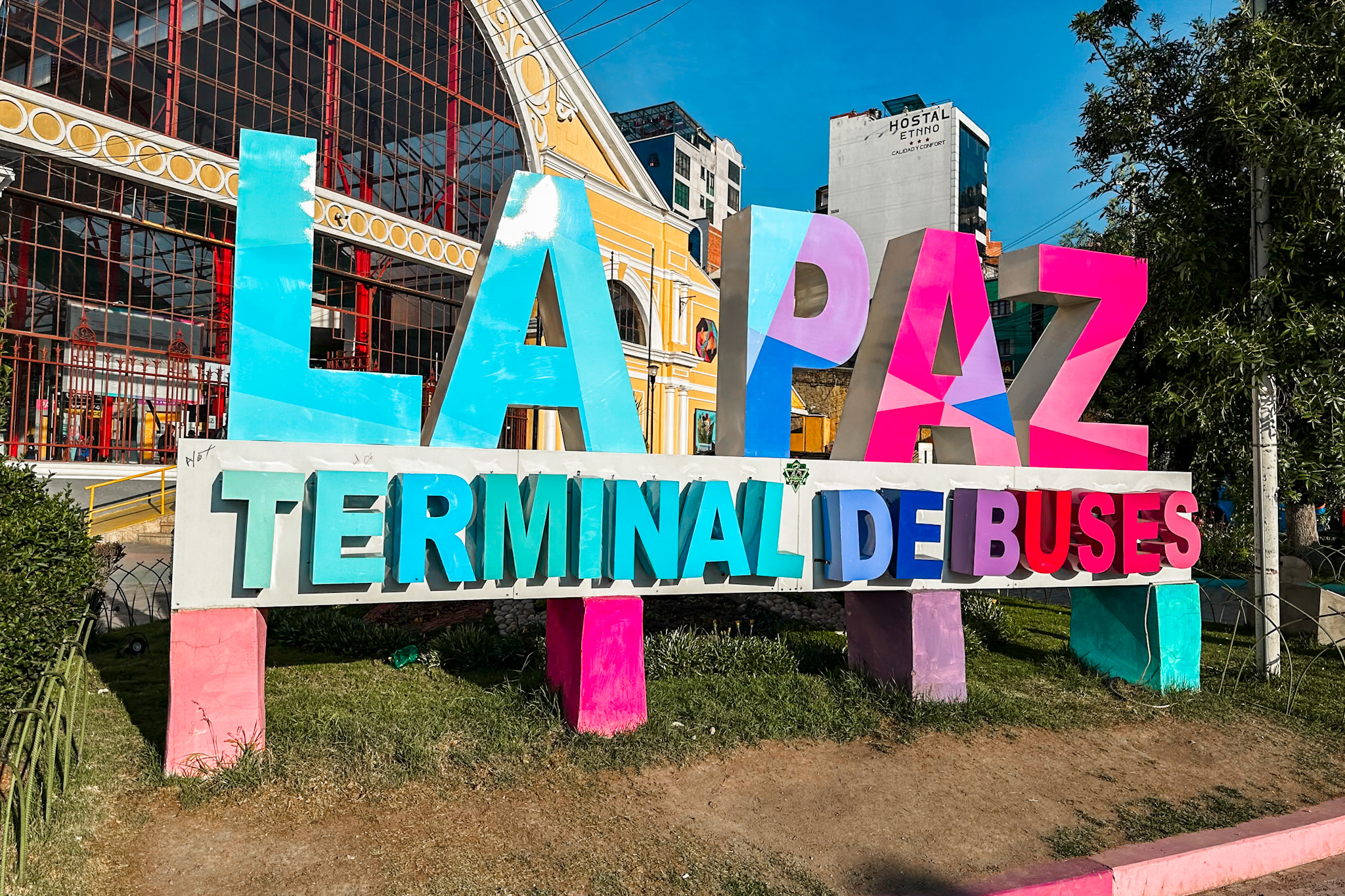
From Santa Cruz to La Paz
From Santa Cruz, you can easily take a domestic flight from the Viru Viru International Airport to La Paz. Domestic flights in Bolivia are very affordable and tickets start from 360 BOB (≈ 54 USD) – 445 BOB (≈ 67 USD) for a one-way flight to La Paz. It’s the best option if you want to save time.
Your next best option is taking a bus from Santa Cruz to La Paz. A direct bus from Santa Cruz to La Paz takes around 18 hours and costs 245 BOB (≈ 37 USD). Tickets can be purchased at the Terminal Bimodal in Santa Cruz or online. To get to the bus terminal, take an Uber, as they are readily available in Santa Cruz.
However, we wouldn’t recommend taking the bus for three reasons: Buses in Bolivia often get delayed or break down. That’s surely nothing that you would want to experience when traveling for such a long time. Secondly, the price difference for a flight ticket is very small. So, taking the plane is the best value for money. Lastly, there’s so much to see between La Paz and Santa Cruz. So, if you consider taking a bus from Santa Cruz, better make some stops in Samaipata, Cochabamba, or Sucre first.
Relevant Reading
From Copacabana to La Paz
For most backpackers, Copacabana is their first or last stop in Bolivia. If you’re coming from Peru, chances are that you’ll come across Copacabana at some point in your journey.
Getting from Copacabana to La Paz is pretty straightforward. Take a bus next to the Plaza Sucre in Copacabana or purchase your bus ticket in advance. A ticket from Copacabana to La Paz costs around 52 BOB (≈ 8 USD). Note that only a few companies are operating between both cities, so it’s best to check their schedules online.
Relevant Reading
From Sucre to La Paz
You can get from Sucre to La Paz by either hopping on an 11-hour bus ride or by taking the plane.
Three buses leave from Sucre at the Terminal de Buses Sucre in the evening at around 7 pm and travel overnight. Make sure to check their schedules here, before going to the terminal. A bus ticket from Sucre to La Paz will cost you between 110 BOB (≈ 17 USD) and 180 BOB (≈ 27 USD).
The flight from Sucre to La Paz takes around 1 hour and a plane ticket usually costs between 300 BOB (≈ 45 USD) to 370 BOB (≈ 56 USD).
Relevant Reading
From Uyuni to La Paz
From Uyuni, you can take a 9-hour direct bus ride to La Paz or take the plane from the Joya Andina Airport (UYU), a super small airport in Uyuni.
Buses are overnight buses that all leave Uyuni from the local bus station around 9 pm. The bus ticket costs between 100 BOB (≈ 15 USD) and 180 BOB (≈ 27 USD), depending on the bus company you choose. It’s best to look up the current bus schedules before going to the terminal. The bus tickets in Uyuni sell out pretty quickly.
A direct flight from Uyuni to La Paz usually costs around 851 BOB (≈ 128 USD), so it’s fairly expensive compared to flying to other destinations in Bolivia. Also, if you decide to take the plane, keep in mind that there is only one flight to La Paz every day.
Relevant Reading
From Cochabamba to La Paz
From Cochabamba, you can either fly directly to La Paz or take the bus.
Flying from Cochabamba to La Paz is super affordable and tickets only cost around 215 BOB (≈ 32 USD). The flight takes 45 minutes and it’s your best option to travel between both cities.
The bus ride between both cities is an 8-hour drive. Buses leave Cochabamba in the morning and evening from the Terminal de Buses here and a ticket costs between 95 BOB (≈ 14 USD) and 110 BOB (≈ 17 USD). Trans Copacabana is the only bus company that operates between both cities. You can check their schedule here. To get to the bus station, order a taxi from your accommodation. Uber is not working reliably in Cochabamba, as there are still too few drivers available.
Relevant Reading
Where to stay in La Paz?
Staying in La Paz is quite affordable. The best districts in La Paz are the Centro Histórico (the city center) and Sopocachi. Avoid staying in El Alto and the rural areas of La Paz as they are less safe after the sunset.
Here are our favorite options to stay in La Paz, including the hotel we stayed at and some other nice options that we have researched.
Where to eat in La Paz?
As you can imagine in a big city, there are uncountable options to get some good food, so it all depends on your preference.
We used the chance to visit a German restaurant, as after traveling for already 6 months, we wanted to treat ourselves to some delicious Schnitzels and beers. The other days we spent in La Paz, we tried different restaurants, from authentic Bolivian cuisine to tasty burgers and some bubble waffle ice cream (yummy!).
Here are our three favorite restaurant picks for La Paz in case you are looking for some solid recommendations in the city.
Lucky Lama
- International
- Moderate
Very cozy restaurant and bar close to the Witches Market. We had some delicious burgers and craft beers there.
Cafe Vida
- International
- Budget
Small authentic cafe in downtown La Paz. They serve delicious porta-filter coffee, healthy bowls, and smoothies.
Carrot Tree Centro
- International
- Moderate
Hip city restaurant that serves mouthwatering Nachos, great pasta, and well-cooked burgers. Plus, you’ll get a super nice view of the city too.
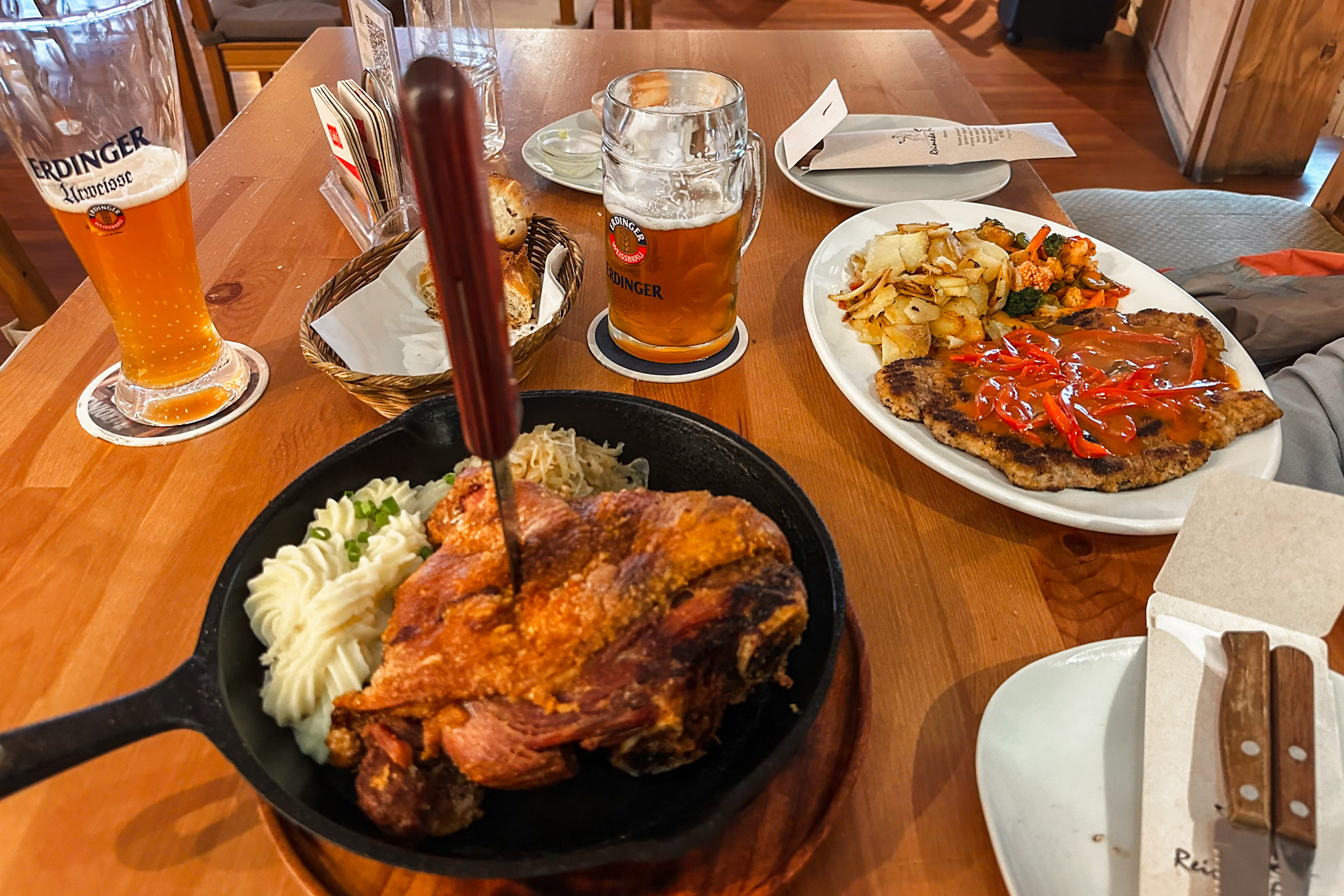
How to get around La Paz?
La Paz, there are almost always traffic jams in downtown. So, the best way to get around the city is by walking or taking the cable car.
Even though Uber is theoretically available in La Paz, getting one is a challenge. There are just too few drivers available. Consider asking your accommodation to order you a taxi in case you are planning to go to the airport or bus terminal. For going anywhere else taking a cable car is the best, most affordable, and convenient option to get from A to B.
A cable car ride in La Paz costs as little as 3 BOB (≈ 0 USD), and they are running from 5 am to 10 pm. Alternatively, if you book your accommodation in La Paz downtown, you can get to almost all of the sights by walking. Plus, it’s free and always the most sustainable option.
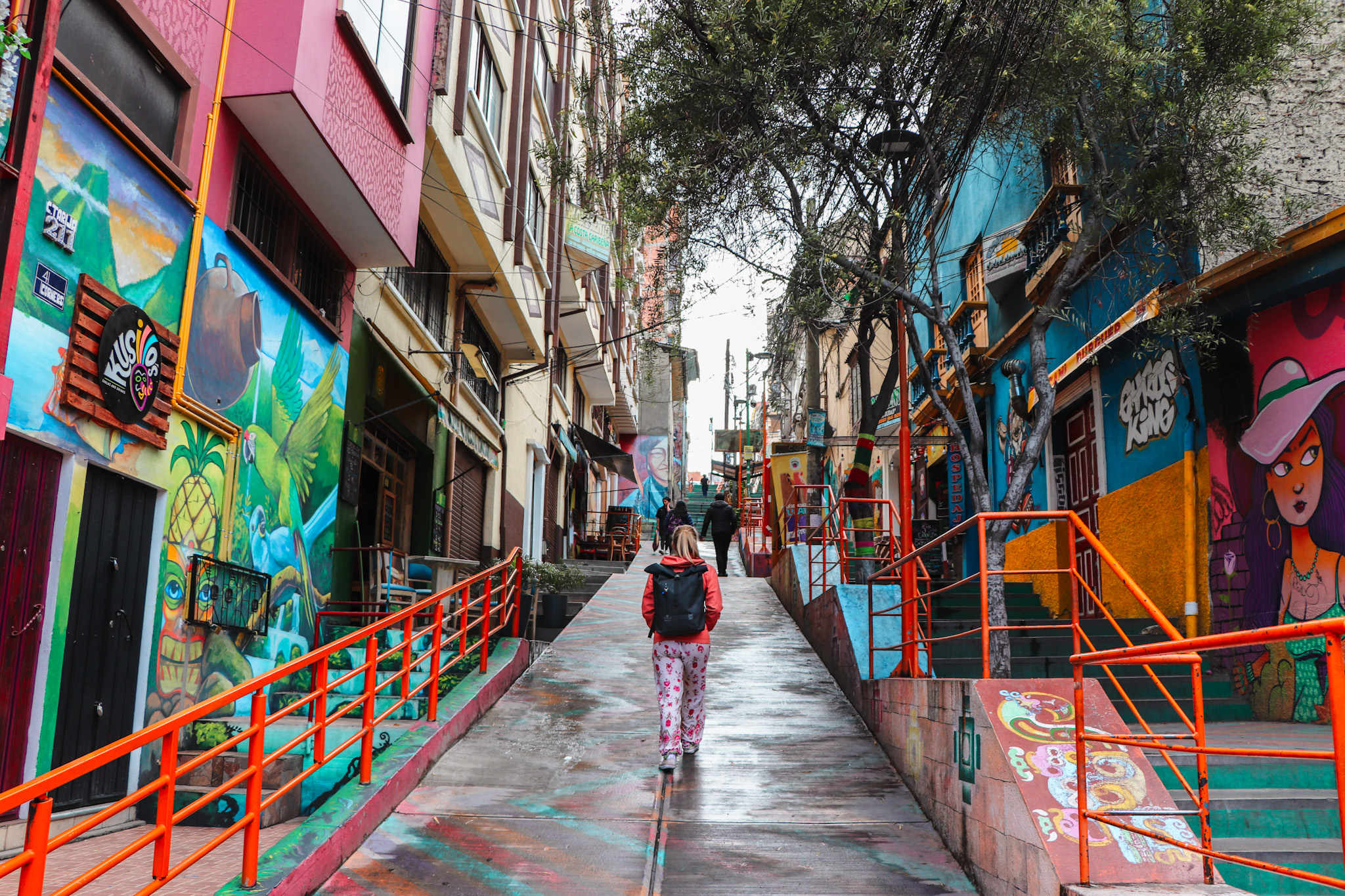
When is the best time to visit La Paz?
The best time to visit La Paz depends on your Bolivia itinerary. While La Paz is a city that can be traveled all year round, the best time to visit the highland areas in Bolivia is May to October. During this time, the skies are blue, precipitation is the lowest and there is plenty of sunshine. It’s the perfect time for outdoor activities and city trips alike.
Consider going to La Paz during the shoulder months of April or November if you would like to save yourself a little money on booking off-season.
The time between December and March is the official rainy season. It’s the cheapest time to visit La Paz and Bolivia. Temperatures are generally warmer during this season and vegetation is lush and green. However, you’ll experience a lot of rain, making adventures like the Death Road a risky endeavor.
Here is our monthly overview of the peak average temperatures, as well as our recommendation on when to travel to La Paz.
Because La Paz is lying at 3,640 meters (11,942 feet) above sea level, temperatures are chilly all year round. Don’t forget to pack some layers of clothes, especially when you plan to go hiking or mountain biking.
What does it cost to visit La Paz?
Visiting La Paz won’t strain your wallet too much. Even though it is still a big city, prices for accommodation, food, and transportation are quite low. Compared to other countries in South America, the cost of living for Bolivia is on the lower end, and so it is for La Paz. Your travel style and the activities you choose to do in La Paz influence your required budget the most.
Expect to spend around 32 USD a day for a budget trip, up to 205 USD if you want to travel with more luxury.
Here is our breakdown of the average daily costs for La Paz.
How many days to stay in La Paz?
The cool thing about crazy La Paz is that you can stay for a few days or a whole week and you don’t run out of amazing things to do.
We didn’t plan to stay over a week in La Paz, but we always wanted to try out this one thing, before we head on. So, we ended up extending our stay several times.
The ideal time to spend in La Paz is maybe something around 3 to 4 days. You can visit the city on your first day, mountain bike the Death Road on your second day, and choose to travel to the Tiwanaku ruins or Lake Titicaca in Copacabana on your third day.
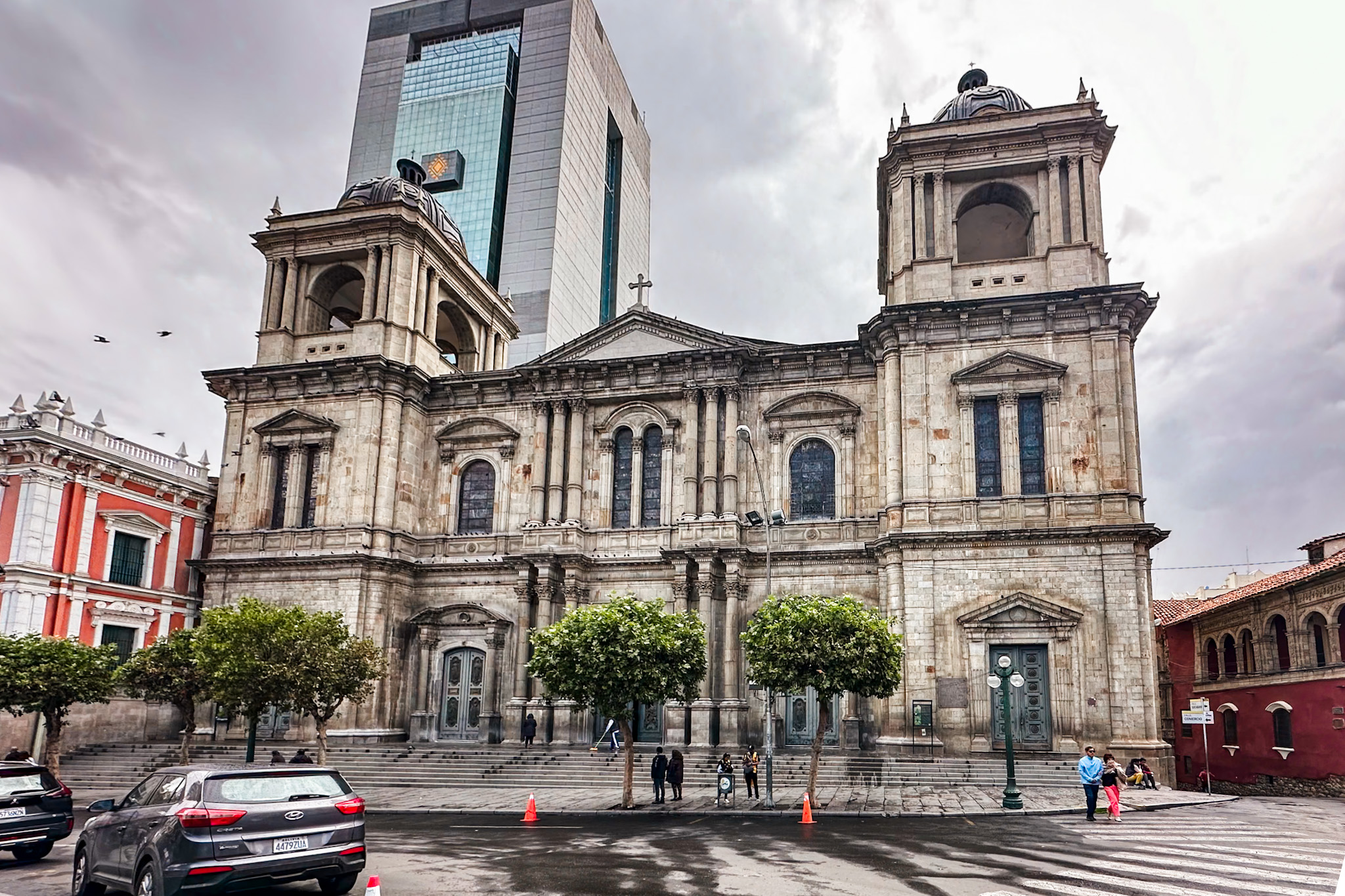
Is La Paz safe to visit?
La Paz in Bolivia is a relatively safe place to visit. Over recent years, crime rates have decreased steadily making it a safer space for tourists. Follow common sense safety precautions and avoid the rural areas of La Paz. Always make sure to check the latest travel advisories from your country before you fly.
When we visited Bolivia, we never felt unsafe. During our week-long stay in the city, we explored the city, went shopping in the evenings, and had dinner at night. Because La Paz is such a busy, crowded, and fast-paced city, we never had the issue of walking down empty streets. Nonetheless, we always only take the things with us that we need and are very careful when visiting people-packed places. So, we’d advise you to do the same.

Is it worth going to La Paz?
La Paz is perfect for thrill seekers and adventurers. While La Paz is a big city like many others, it does offer some unique and crazy things that we haven’t seen anywhere else. It wasn’t the most beautiful city in South America, for sure, but one of the most strange and special ones.
There’s plenty to do and see in La Paz, and if you have some more days to spare next to visiting the Uyuni Salt Flats, the most popular attraction in Bolivia, then La Paz is totally worth a visit.
